
Pearls of the Empire: A Central European Odyssey
 12 Day Tour of Budapest, Vienna, Prague and Krakow
12 Day Tour of Budapest, Vienna, Prague and Krakow
Overview
Trip Map
Itinerary
Inclusions
Reviews







12 Days 11 Nights
Best Time: Jan-Dec
History Buffs
Day Cruises
Experience the best of Central Europe with Go Real Travel on a journey through the heart of Central Europe, where the legacies of the Austro-Hungarian Empire come alive. Discover Budapest, Vienna, Prague, and Krakow, cities renowned for their charm and steeped in history, each boasting architectural marvels stretching back to the Middle Ages. Enjoy private guided tours and explore these magnificent cities at your own pace with detailed travel guidance available through our mobile app. Revel in the magic of river cruises along the Danube in Budapest and the Vltava in Prague, and sail the stunning Wachau Valley in the Austrian countryside.
- Experience Budapest's thermal bath culture in the elegant Gellért Baths or the exotic Rudas Baths.
- Enjoy an enchanting evening cruise on the Danube River, taking in Budapest's illuminated skyline.
- Ride a tram along Vienna's Ring Street, admiring its grand neo-Gothic & neo-Classical structures.
- Watch the enchanting display of Prague’s Astronomical Clock and cross the iconic Charles Bridge.
- Wander through the historic Wawel Castle in Krakow, the heart of Poland's royal history.
Experience the best of Central Europe with Go Real Travel on a journey through the heart of Central Europe, where the legacies of the Austro-Hungarian Empire come alive. Discover Budapest, Vienna, Prague, and Krakow, cities renowned for their charm and steeped in history, each boasting architectural marvels stretching back to the Middle Ages. Enjoy private guided tours and explore these magnificent cities at your own pace with detailed travel guidance available through our mobile app. Revel in the magic of river cruises along the Danube in Budapest and the Vltava in Prague, and sail the stunning Wachau Valley in the Austrian countryside.
- Experience Budapest's thermal bath culture in the elegant Gellért Baths or the exotic Rudas Baths.
- Enjoy an enchanting evening cruise on the Danube River, taking in Budapest's illuminated skyline.
- Ride a tram along Vienna's Ring Street, admiring its grand neo-Gothic & neo-Classical structures.
- Watch the enchanting display of Prague’s Astronomical Clock and cross the iconic Charles Bridge.
- Wander through the historic Wawel Castle in Krakow, the heart of Poland's royal history.

Hungarian Parliament
Architecture

National Museum
Museums & Galleries

Central Market
Street Markets

Castle Hill
Castles & Chateaux

Hofburg Palace
Castles & Chateaux

Schönbrunn Palace & Zoo
Parks & Gardens

Prague Castle
Castles & Chateaux

Charles Bridge
Historic Landmarks

Old Town
Architecture
Must see sights

Hungarian Parliament
Architecture

National Museum
Museums & Galleries

Central Market
Street Markets

Castle Hill
Castles & Chateaux

Hofburg Palace
Castles & Chateaux

Schönbrunn Palace & Zoo
Parks & Gardens

Prague Castle
Castles & Chateaux

Charles Bridge
Historic Landmarks

Old Town
Architecture
Starting from
$2350
per person
 Not included
Not included Secure Your Customizable Trip
Enter your details to embark on a journey that can be tailored just for you.
Start
Travelers
0 travelers
Add Room
Remove Room
Preferred Hotel Stars
Select Hotel Stars
Craft Your Own Itinerary
Select your interests and destinations for a trip plan inspired by you.
Empires of Central Europe Trip - Map & Itinerary
Enable/Disable Map Scrolling
Click To Make Map Interactive

Empires of Central Europe Trip Timeline
 Edit Details
Edit DetailsArrival
2 nights
Budapest
Hungary
Train: 3h
3 nights
Vienna
Austria
Train: 4.5h
3 nights
Prague
Czech Republic
Overnight Sleeper Train: 8h
2 nights
Krakow
Poland
Departure
Day-By-Day Itinerary of Empires of Central Europe Trip
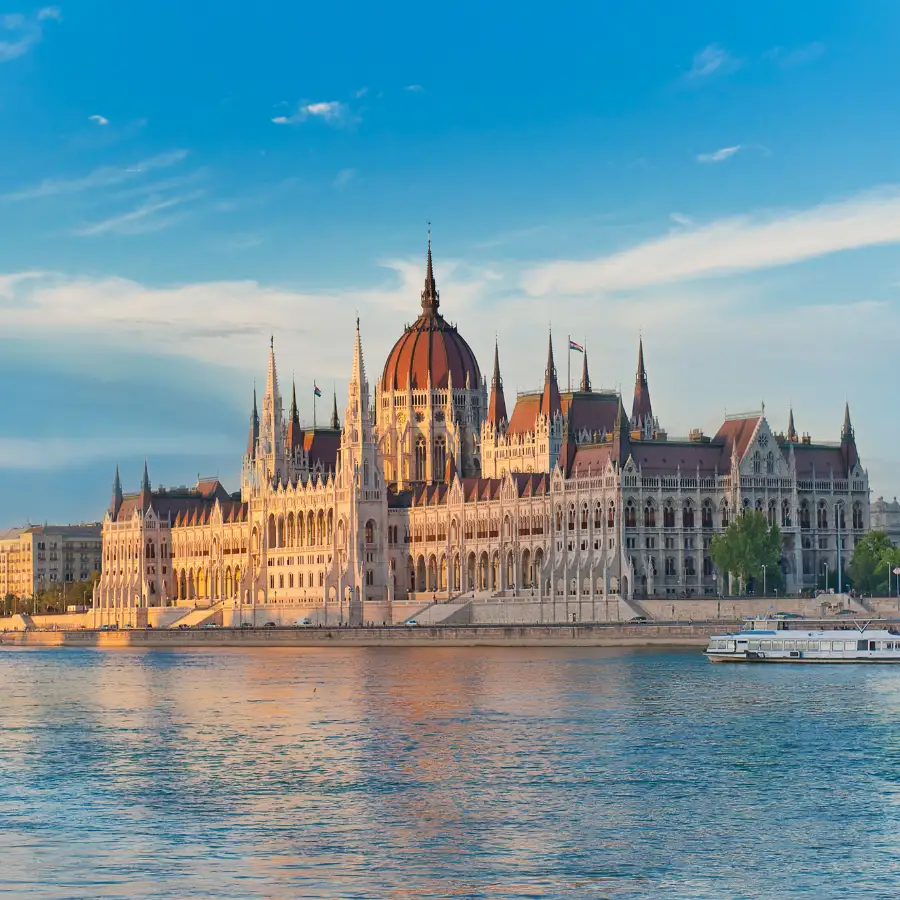
Day 1
Arrive Budapest
Day 1
Arrive Budapest



To Be Determined
Private Budapest Airport Pickup
We will schedule a pick up for 30 minutes after your flight's arrival time. You will be met in the terminal by a driver holding a sign with your name on it. The ride is for your party only - you will not be sharing a vehicle. The cost of the ride is included in your package, and you will not have to pay the driver. IMPORTANT NOTE: Please be aware the car service can fit up to 1 checked item of luggage and 1 personal item per person, such as a purse or small backpack. If you think you will have more baggage, please inform your travel consultant as this may result in an additional fee.

Day 1
Arrive Budapest


Day 1
Arrive Budapest




To Be Determined:
Private Budapest Airport Pickup
Mid-Day/Afternoon:
Hungarian Parliament & Nearby
Late Afternoon/Early Evening:
Central Market & Váci Street

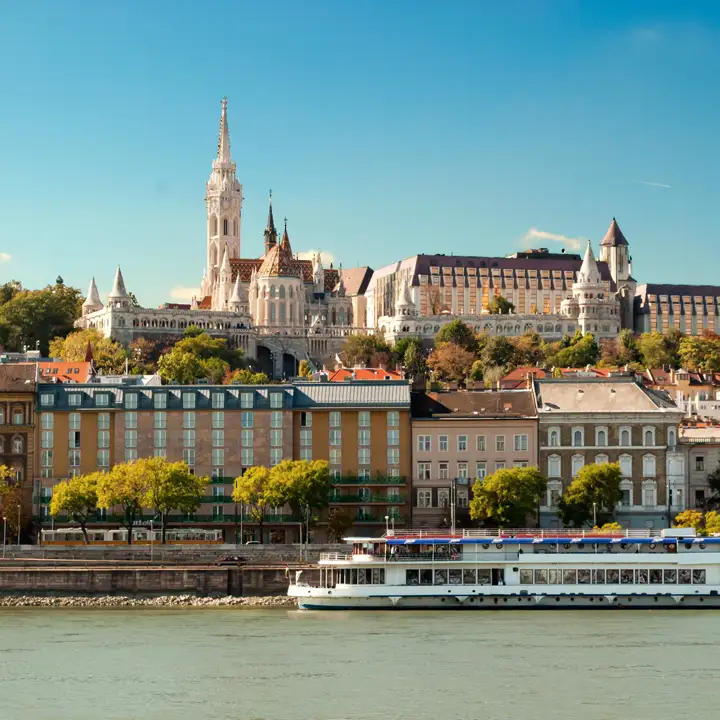
Day 2
Budapest
Day 2
Budapest




9:00 AM - 12:30 PM
Guided Walk in Budapest
During your tour you will take in a gorgeous vista of the city from the Fisherman's Bastion, explore the winding streets of the Castle District, gaze in awe at the striking interior of St. Stephen's Basilica, travel along the city's most elegant avenue and more. Along the way you will experience the city as a local does, stopping to check out intimate courtyards, enjoying a pastry and soaking in the ambiance of Budapest's most elegant cafes.

Day 2
Budapest


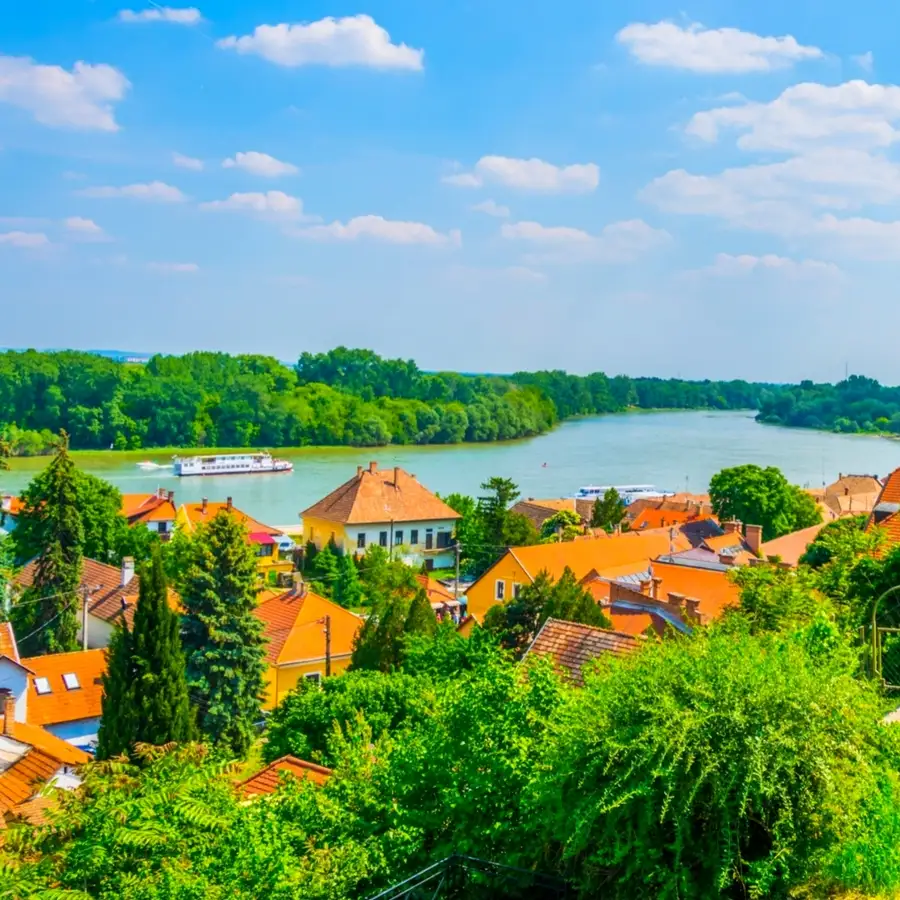
Day 3
Budapest to Vienna
Day 3
Budapest to Vienna





Morning/Mid-Day
Szentendre Excursion
The little cobblestoned town of Szentendre lies charmingly nestled alongside the Danube River and is less than an hour away from Budapest by train or car. Nearly every building in the town dates back to the period of baroque architecture. It is now a haven for artists, who sell their works throughout town.

Fő tér (Fő Square)
A colorful pedestrian square in the heart of the town.
Show More

Szentendre Skanzen Village Museum
A Hungarian folk culture open-air museum
Show More

Belgrade Church, Szentendre
A baroque Orthodox church and museum with stunning Orthodox icons and other religious art.
Show More

Templom tér
A square overlooking the town that is missed by many visitors.
Show More

Fő tér (Fő Square)
A colorful pedestrian square in the heart of the town.
Show More

Szentendre Skanzen Village Museum
A Hungarian folk culture open-air museum
Show More

Belgrade Church, Szentendre
A baroque Orthodox church and museum with stunning Orthodox icons and other religious art.
Show More

Templom tér
A square overlooking the town that is missed by many visitors.
Show More
prev
next

Day 3
Budapest to Vienna

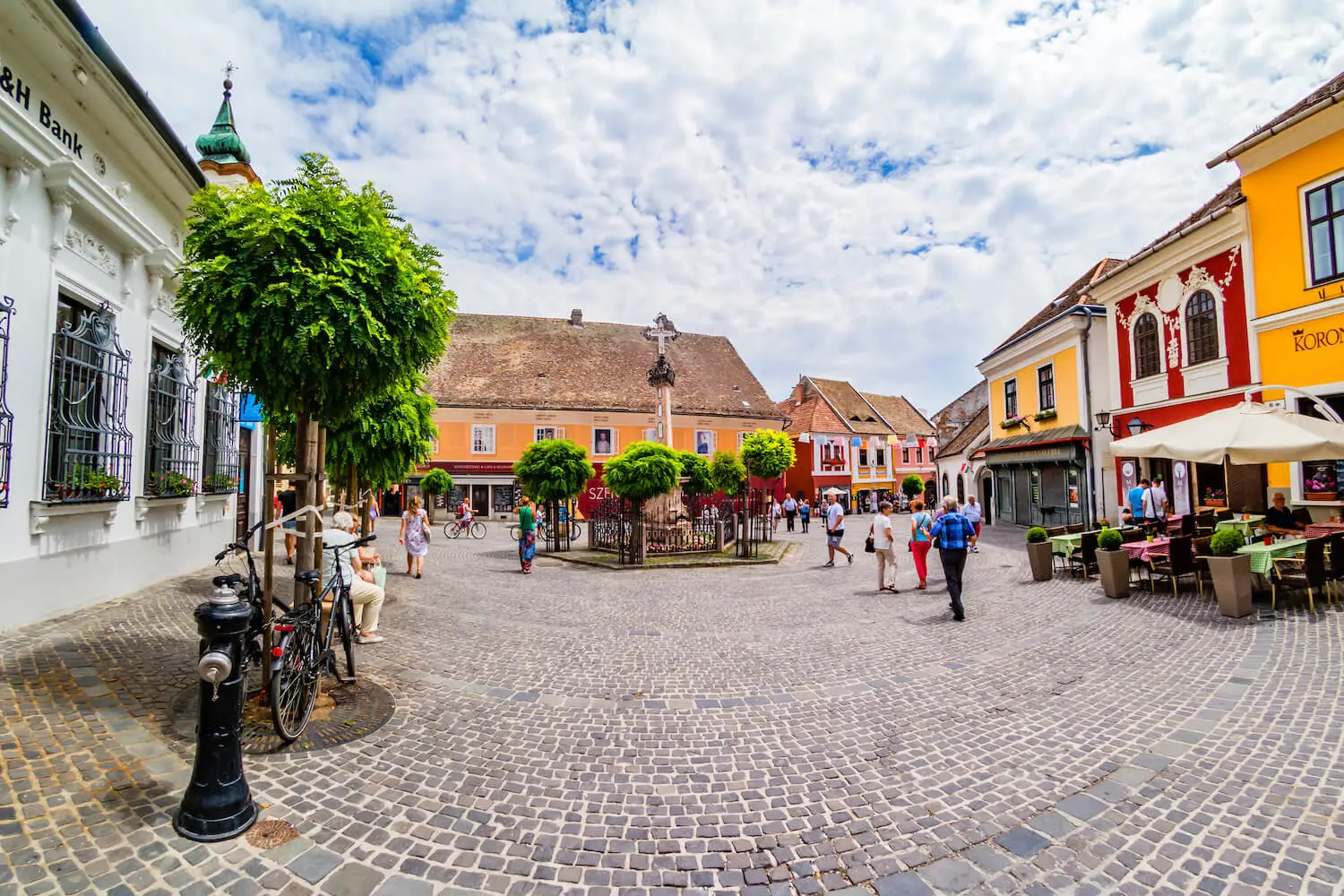
Fő tér (Fő Square)
 Highlight of Szentendre Excursion
Highlight of Szentendre ExcursionA colorful pedestrian square in the heart of the town.
You will find restaurants and shops lining the cobblestoned square. Also on the square is the Szentendre Gallery, which is located in the ground floor of a building dating back to 1720. The Orthodox church adjacent to the square is also definitely worth a look.

Szentendre Skanzen Village Museum
 Highlight of Szentendre Excursion
Highlight of Szentendre ExcursionA Hungarian folk culture open-air museum
The museum consists of an entire village, taking visitors back in time to 18th- to 20th-century rural and farming life. You can see reconstructed farm dwellings and a museological collection.

Belgrade Church, Szentendre
 Highlight of Szentendre Excursion
Highlight of Szentendre ExcursionA baroque Orthodox church and museum with stunning Orthodox icons and other religious art.
The museum features art collected from Hungary's formerly Serbian churches. The churches were closed as Serbs emigrated to Serbia or integrated into the Hungarian population, and the finest art from the churches was saved and sent to Szentendre. An 800 HUF admission covers both the church and the museum – you may even have the museum to yourselves.
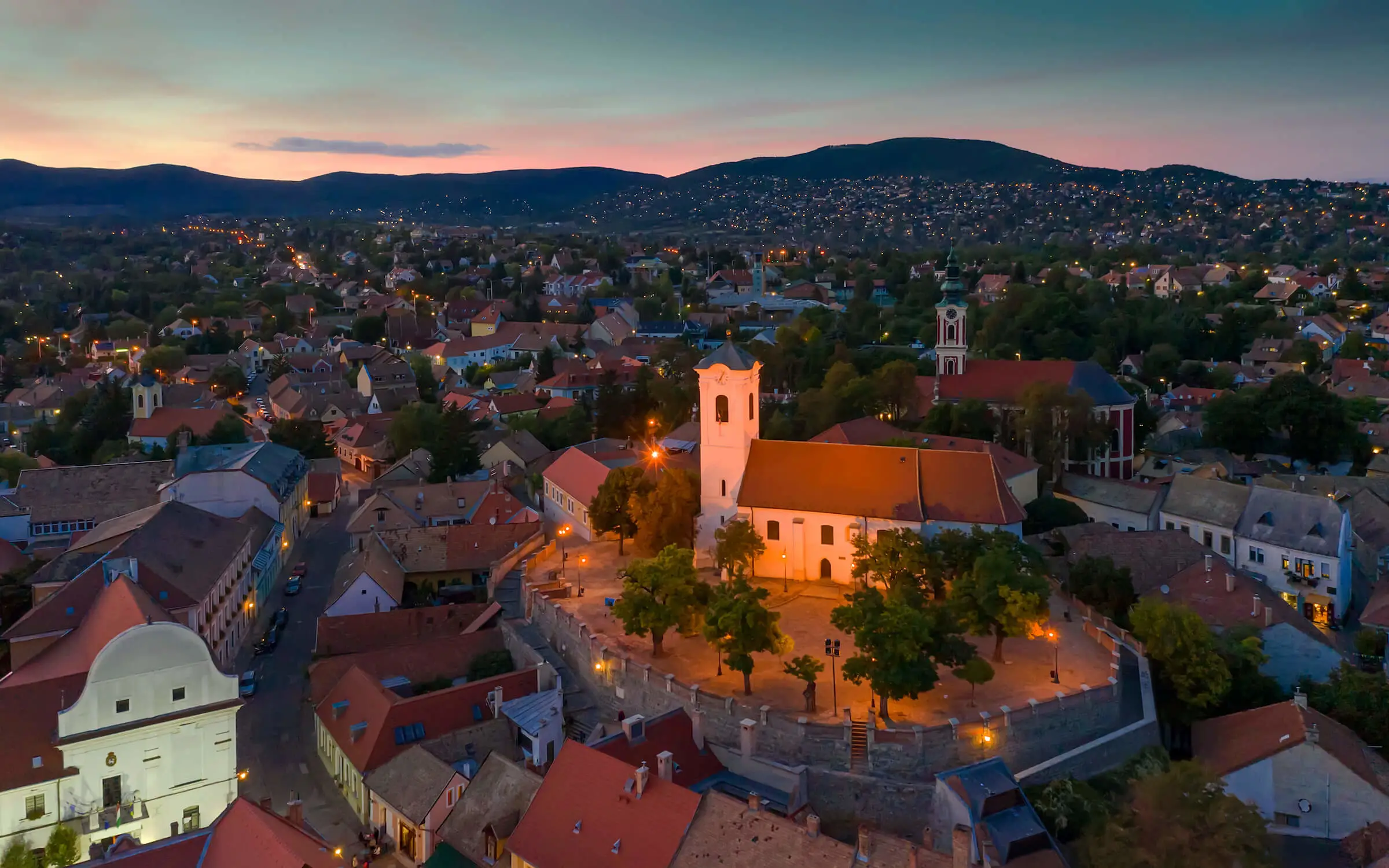
Templom tér
 Highlight of Szentendre Excursion
Highlight of Szentendre ExcursionA square overlooking the town that is missed by many visitors.
The Templom square above Fő square provides a nice viewpoint from which to admire the town, and the Church of St. John is also worth a peak if open. Also on the square is a small art museum dedicated to Béla Czóbel (1883-1976), a Hungarian avant-garde painter.

Fő tér (Fő Square)
 Highlight of Szentendre Excursion
Highlight of Szentendre ExcursionA colorful pedestrian square in the heart of the town.
You will find restaurants and shops lining the cobblestoned square. Also on the square is the Szentendre Gallery, which is located in the ground floor of a building dating back to 1720. The Orthodox church adjacent to the square is also definitely worth a look.

Szentendre Skanzen Village Museum
 Highlight of Szentendre Excursion
Highlight of Szentendre ExcursionA Hungarian folk culture open-air museum
The museum consists of an entire village, taking visitors back in time to 18th- to 20th-century rural and farming life. You can see reconstructed farm dwellings and a museological collection.

Belgrade Church, Szentendre
 Highlight of Szentendre Excursion
Highlight of Szentendre ExcursionA baroque Orthodox church and museum with stunning Orthodox icons and other religious art.
The museum features art collected from Hungary's formerly Serbian churches. The churches were closed as Serbs emigrated to Serbia or integrated into the Hungarian population, and the finest art from the churches was saved and sent to Szentendre. An 800 HUF admission covers both the church and the museum – you may even have the museum to yourselves.

Templom tér
 Highlight of Szentendre Excursion
Highlight of Szentendre ExcursionA square overlooking the town that is missed by many visitors.
The Templom square above Fő square provides a nice viewpoint from which to admire the town, and the Church of St. John is also worth a peak if open. Also on the square is a small art museum dedicated to Béla Czóbel (1883-1976), a Hungarian avant-garde painter.
prev
next


Day 4
Vienna
Day 4
Vienna




9:00 AM - 11:30 AM
Guided Walk of the Inner City
This tour takes you back in history to explore the Vienna that stood within the old city walls. You will learn about the humble beginnings of Vienna before it became the capital of a great empire and one of the most important cities in Europe. You will discover how Vienna's early inhabitants lived and how they left their mark on the city and its beautiful Medieval, Renaissance, and Baroque architecture.

Day 4
Vienna



Day 5
Vienna
Day 5
Vienna


Early Morning to Early Evening
Wachau Valley
A one-and-a-half-hour train ride from Vienna brings you to the town of Melk, where you can tour the vast Melk Abbey. From there you can begin a 22-mile cruise through the Wachau Valley, considered the most beautiful stretch of the entire Danube River. You'll pass medieval castle ruins, hills covered in vineyards, and several charming villages, where you can debark to try some wine or take a hike up to a castle. The valley is also a perfect destination for cyclers and winery tours.

Dürnstein
Explore the twisting narrow lanes of this delightful monastery town.
Show More

Dürnstein Castle Ruins
Hike to the dramatic ruins of a medieval castle built in 1100's.
Show More

Melk Abbey
Tour a huge and splendid Baroque monastery.
Show More

Spitz
Stop to taste the wine in a postcard-pretty town surrounded by vineyards.
Show More

Dürnstein
Explore the twisting narrow lanes of this delightful monastery town.
Show More

Dürnstein Castle Ruins
Hike to the dramatic ruins of a medieval castle built in 1100's.
Show More

Melk Abbey
Tour a huge and splendid Baroque monastery.
Show More

Spitz
Stop to taste the wine in a postcard-pretty town surrounded by vineyards.
Show More
prev
next

Day 5
Vienna

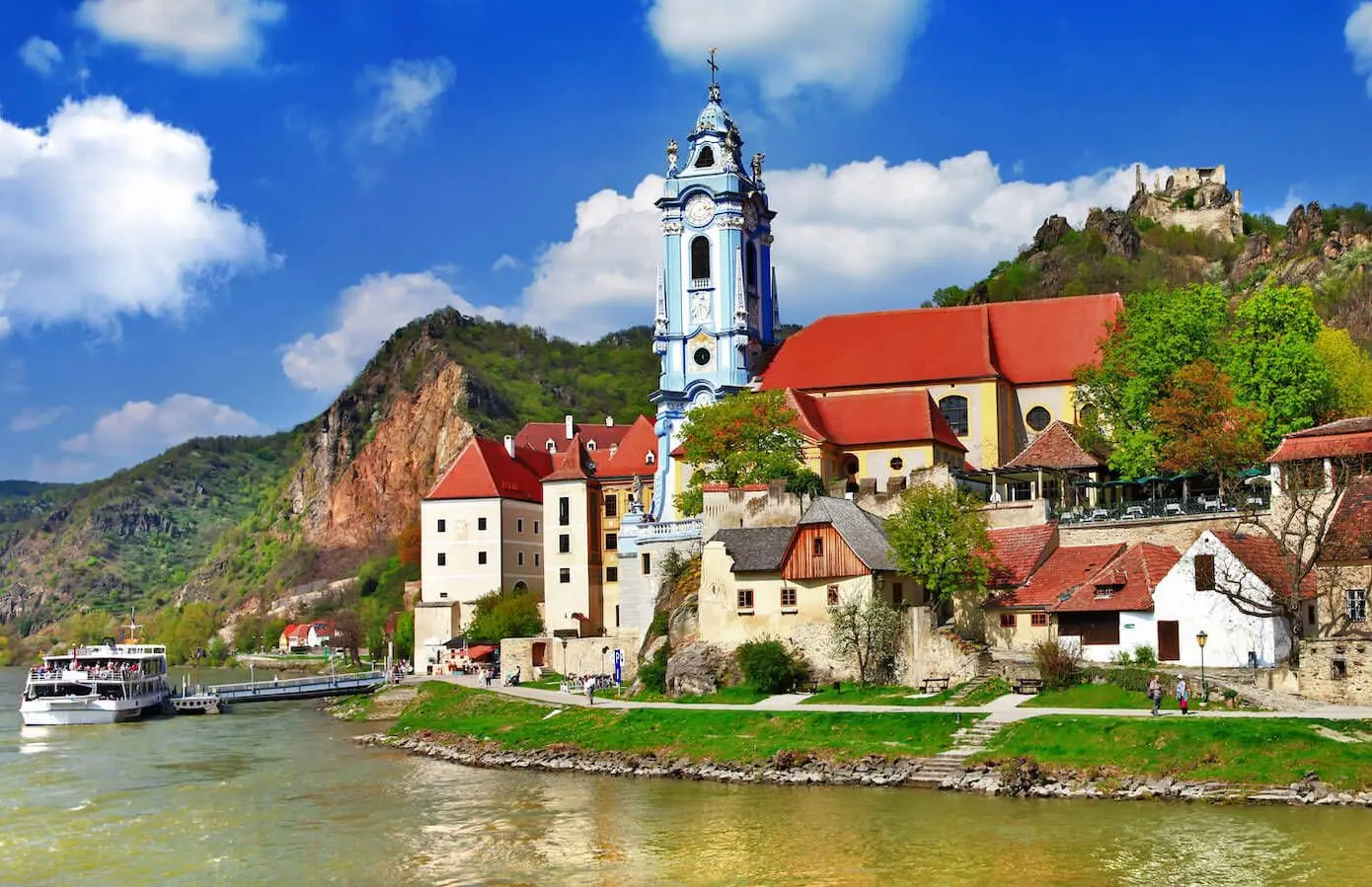
Dürnstein
 Highlight of Wachau Valley
Highlight of Wachau ValleyExplore the twisting narrow lanes of this delightful monastery town.
Named for the castle that overlooks it, Dürnstein is probably the most-visited stop in the Wachau valley. Reached by an ancient tunnel leading from the boat docks, it is well-known for its wine as well as the beautiful blue church tower of its Augustinian monastery.
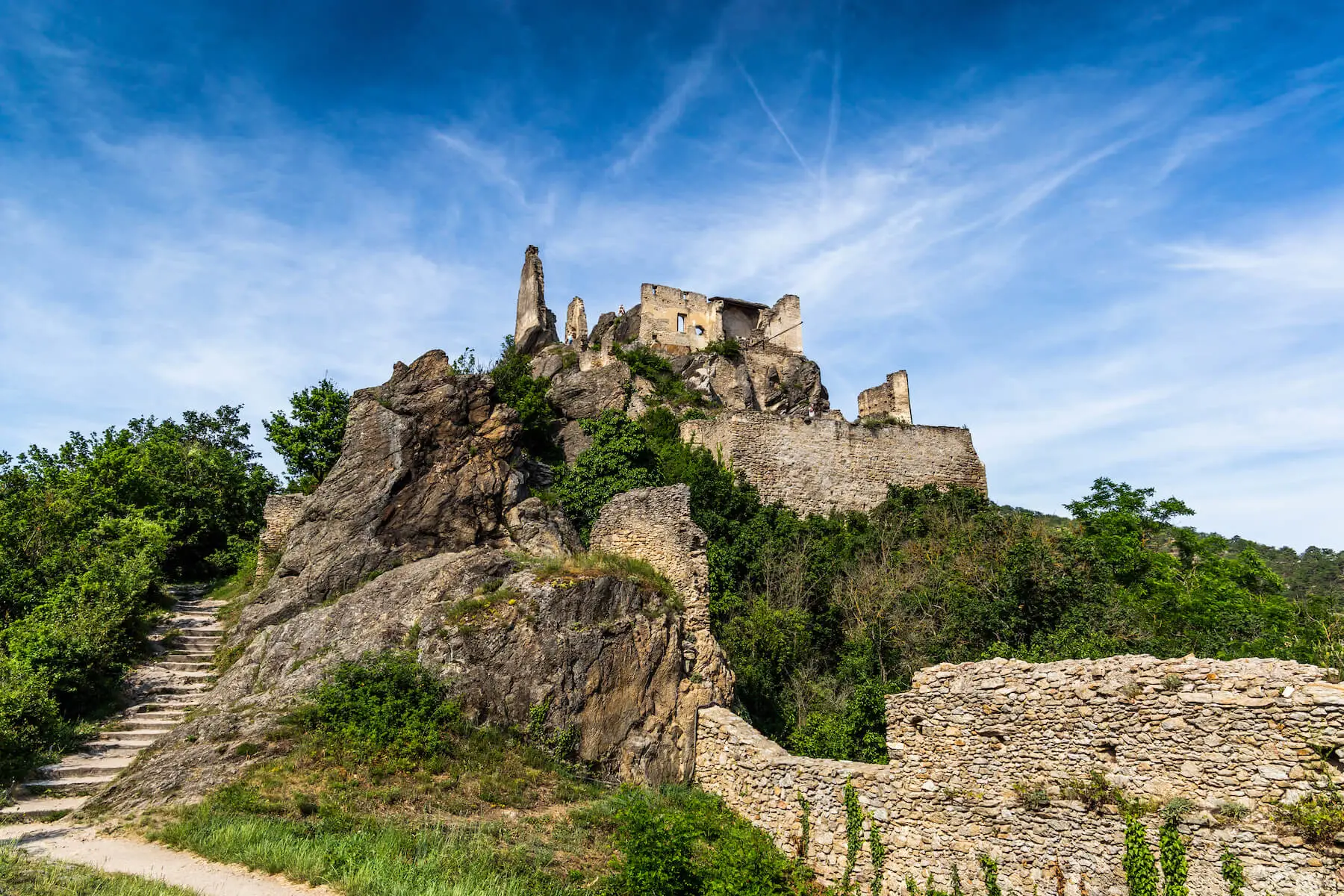
Dürnstein Castle Ruins
 Highlight of Wachau Valley
Highlight of Wachau ValleyHike to the dramatic ruins of a medieval castle built in 1100's.
The hike leading to the castle is steep, but the amazing view you are rewarded with makes it all worth while. The fascinating ruins are extensive and can be freely explored. The castle was made famous by its most illustrious prisoner, King Richard the Lionhearted of England, who was held there for ransom.
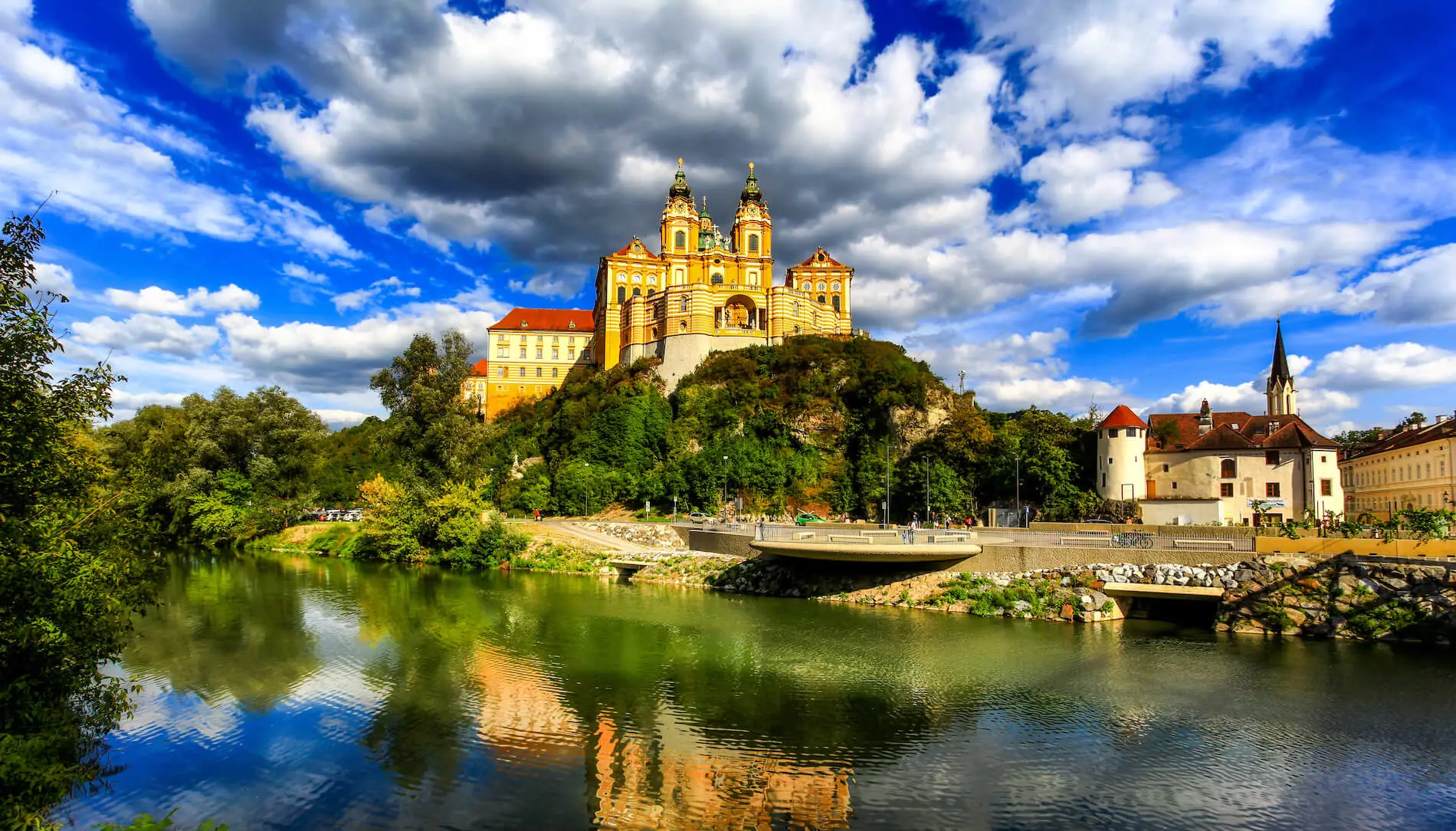
Melk Abbey
 Highlight of Wachau Valley
Highlight of Wachau ValleyTour a huge and splendid Baroque monastery.
Founded in 1089 when the Austrian duke gave one of his castles to Benedictine monks, Melk Abbey is now both a place of pilgrimage and a major tourist attraction. Visitors come for the museum of religious artifacts, the jaw-dropping library, and the sublime church. The town square below the abbey is also a great place for a meal or wine.
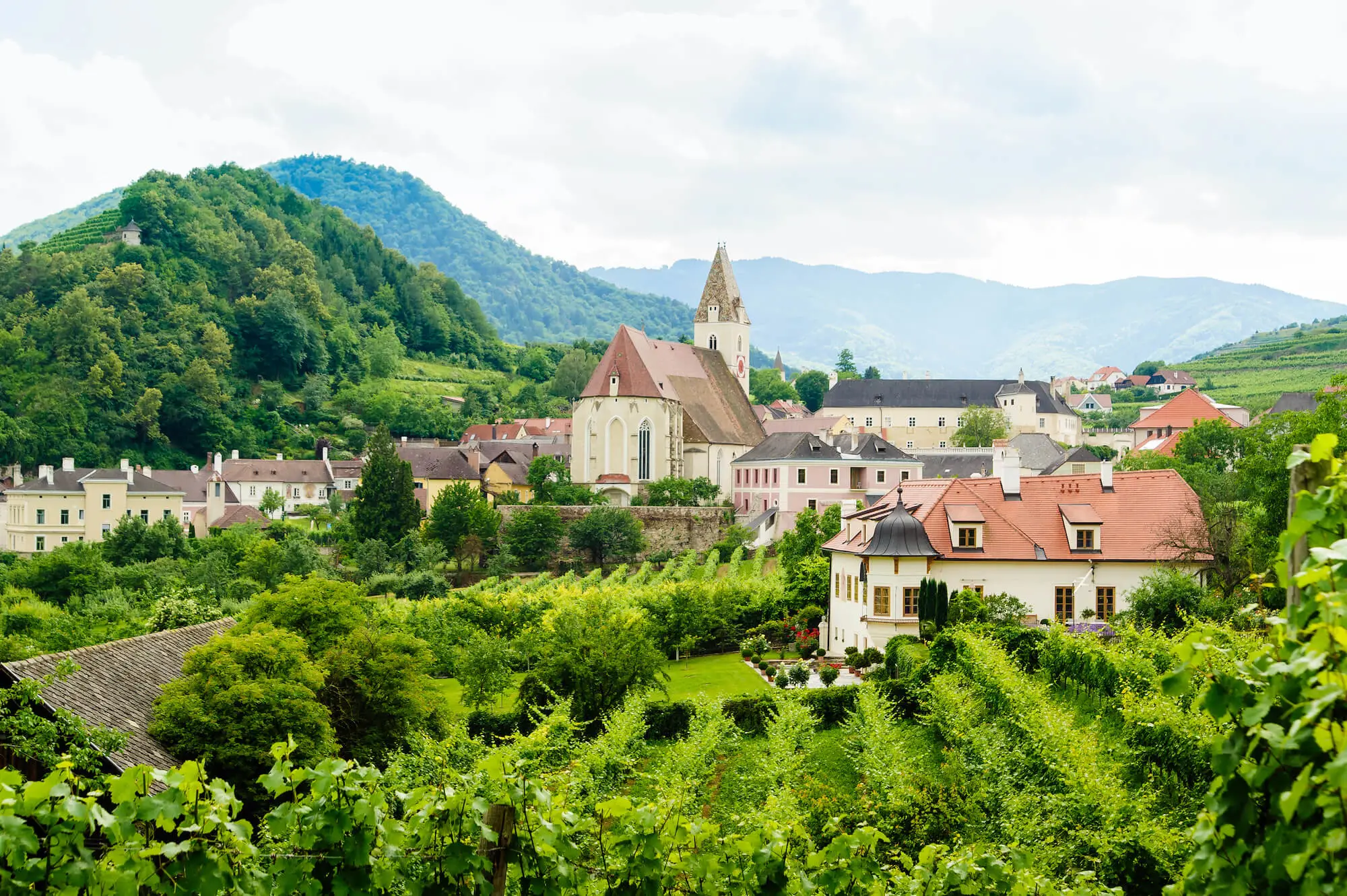
Spitz
 Highlight of Wachau Valley
Highlight of Wachau ValleyStop to taste the wine in a postcard-pretty town surrounded by vineyards.
Spitz is a favorite stop due to its bucolic atmosphere and abundance of wine taverns and restaurants. It is also home to the Tausendeimerberg or "House of a Thousand Buckets" (so named for the abundance of wine fields) and the castle ruins of Hinterhaus, which make for a nice (if steep) hike from the village.

Dürnstein
 Highlight of Wachau Valley
Highlight of Wachau ValleyExplore the twisting narrow lanes of this delightful monastery town.
Named for the castle that overlooks it, Dürnstein is probably the most-visited stop in the Wachau valley. Reached by an ancient tunnel leading from the boat docks, it is well-known for its wine as well as the beautiful blue church tower of its Augustinian monastery.

Dürnstein Castle Ruins
 Highlight of Wachau Valley
Highlight of Wachau ValleyHike to the dramatic ruins of a medieval castle built in 1100's.
The hike leading to the castle is steep, but the amazing view you are rewarded with makes it all worth while. The fascinating ruins are extensive and can be freely explored. The castle was made famous by its most illustrious prisoner, King Richard the Lionhearted of England, who was held there for ransom.

Melk Abbey
 Highlight of Wachau Valley
Highlight of Wachau ValleyTour a huge and splendid Baroque monastery.
Founded in 1089 when the Austrian duke gave one of his castles to Benedictine monks, Melk Abbey is now both a place of pilgrimage and a major tourist attraction. Visitors come for the museum of religious artifacts, the jaw-dropping library, and the sublime church. The town square below the abbey is also a great place for a meal or wine.

Spitz
 Highlight of Wachau Valley
Highlight of Wachau ValleyStop to taste the wine in a postcard-pretty town surrounded by vineyards.
Spitz is a favorite stop due to its bucolic atmosphere and abundance of wine taverns and restaurants. It is also home to the Tausendeimerberg or "House of a Thousand Buckets" (so named for the abundance of wine fields) and the castle ruins of Hinterhaus, which make for a nice (if steep) hike from the village.
prev
next


Day 6
Vienna to Prague
Day 6
Vienna to Prague




Morning/Mid-Day
Ring Street
The Ringstrasse, or the Ring Street, surrounds Vienna's old town where the city walls once stood until the 19th century. The Austro-Hungarian Empire was at the height of its prosperity at the time the walls were torn down, and so it lined the wide Ringstrasse with monumental buildings such as the neo-Gothic town hall and neo-Classical parliament buildling. A fun experience is to take a tram ride around the entire length of the Ringstrasse, soaking in the full richness of the spectacle.

Natural History Museum
Explore one of the world's most important natural history collections.
Show More

Kunsthistorisches Museum
Find artistic bliss in this lavish 19th-century museum housing art collections & antiquities.
Show More

Rathaus (City Hall)
Get in touch with the local vibe at the Rathausplatz, a huge square in front of the Vienna City Hall.
Show More

Natural History Museum
Explore one of the world's most important natural history collections.
Show More

Kunsthistorisches Museum
Find artistic bliss in this lavish 19th-century museum housing art collections & antiquities.
Show More

Rathaus (City Hall)
Get in touch with the local vibe at the Rathausplatz, a huge square in front of the Vienna City Hall.
Show More

Natural History Museum
Explore one of the world's most important natural history collections.
Show More
prev
next

Day 6
Vienna to Prague


Natural History Museum
 Highlight of Ring Street
Highlight of Ring StreetExplore one of the world's most important natural history collections.
The museum is a treasure trove of anthropological and archeological exhibits, including dinosaurs and other extinct animals, precious gems, and more. It also holds the famous pre-historic finds from the Austrian village of Hallstatt, where an ancient salt mine was located.

Kunsthistorisches Museum
 Highlight of Ring Street
Highlight of Ring StreetFind artistic bliss in this lavish 19th-century museum housing art collections & antiquities.
The Kunsthistorisches Museum, or Art History Museum, is one of the world's most important collections of art. It houses many masterpieces as well as ancient and classical art antiquities. Its amazing interior is worth seeing just on its own merits, and includes an incredible mural painted by Gustav Klimt.
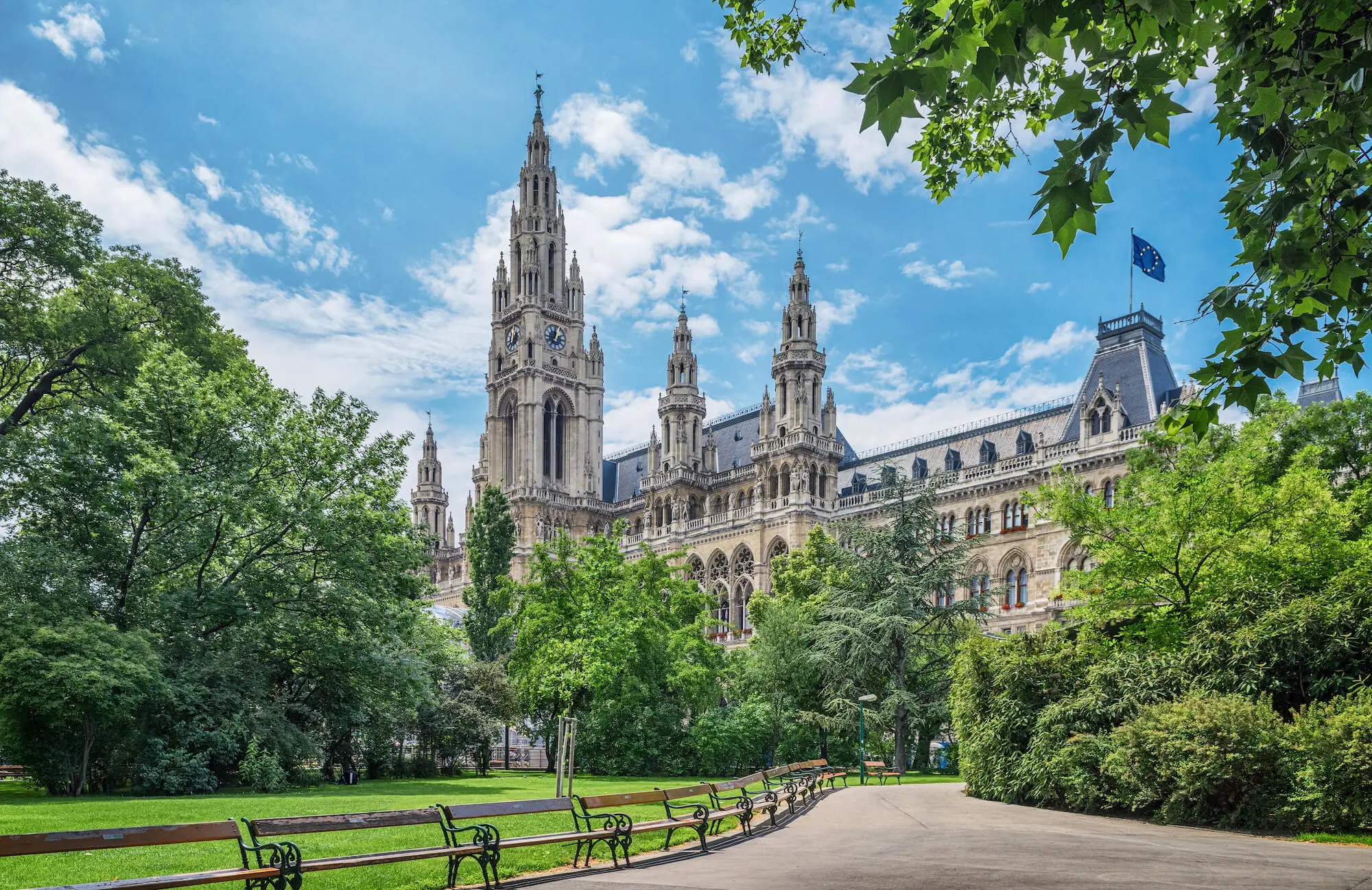
Rathaus (City Hall)
 Highlight of Ring Street
Highlight of Ring StreetGet in touch with the local vibe at the Rathausplatz, a huge square in front of the Vienna City Hall.
The 19th-century city hall was built in a fanciful neo-Gothic style with 30 million bricks. It is an important center for social life in the city, hosting balls, concerts, and other events. The square in front of the hall is home to activities all year long, including markets, food fairs, exhibitions, and the city's biggest Christmas Market.

Natural History Museum
 Highlight of Ring Street
Highlight of Ring StreetExplore one of the world's most important natural history collections.
The museum is a treasure trove of anthropological and archeological exhibits, including dinosaurs and other extinct animals, precious gems, and more. It also holds the famous pre-historic finds from the Austrian village of Hallstatt, where an ancient salt mine was located.

Kunsthistorisches Museum
 Highlight of Ring Street
Highlight of Ring StreetFind artistic bliss in this lavish 19th-century museum housing art collections & antiquities.
The Kunsthistorisches Museum, or Art History Museum, is one of the world's most important collections of art. It houses many masterpieces as well as ancient and classical art antiquities. Its amazing interior is worth seeing just on its own merits, and includes an incredible mural painted by Gustav Klimt.

Rathaus (City Hall)
 Highlight of Ring Street
Highlight of Ring StreetGet in touch with the local vibe at the Rathausplatz, a huge square in front of the Vienna City Hall.
The 19th-century city hall was built in a fanciful neo-Gothic style with 30 million bricks. It is an important center for social life in the city, hosting balls, concerts, and other events. The square in front of the hall is home to activities all year long, including markets, food fairs, exhibitions, and the city's biggest Christmas Market.

Natural History Museum
 Highlight of Ring Street
Highlight of Ring StreetExplore one of the world's most important natural history collections.
The museum is a treasure trove of anthropological and archeological exhibits, including dinosaurs and other extinct animals, precious gems, and more. It also holds the famous pre-historic finds from the Austrian village of Hallstatt, where an ancient salt mine was located.
prev
next


Day 7
Prague
Day 7
Prague




9:00 AM - 12:30 PM
Royal Route Guided Tour
On this charming guided walk, you will explore the Prague Castle, the largest castle complex in all of Europe. To reach the castle you will trace the Royal Coronation Route and cross the Charles Bridge, whose “speaking stones” reveal the amazing and often cruel history that occurred there. Your tour guide will then take you either through the castle courtyards and into the dramatic St. Vitus Cathedral in the center of the castle complex, or through the upper part of the castle district around the oversized palaces of the old Catholic nobility and the top of the Castle Steps for incomparable views over the red rooftops of the Little Quarter.

Charles Bridge
Cross the river dividing Prague's most historic neighborhoods, and experience one of Europe's most iconic landmarks.
Show More

Maltese Square & Lennon Wall
See a historic wall that has been covered in John Lennon-inspired graffiti since Communist days.
Show More

Prague Castle
Prague Castle is one of the main attractions in Prague and is also the largest castle complex in the world.
Show More

Charles Bridge
Cross the river dividing Prague's most historic neighborhoods, and experience one of Europe's most iconic landmarks.
Show More

Maltese Square & Lennon Wall
See a historic wall that has been covered in John Lennon-inspired graffiti since Communist days.
Show More

Prague Castle
Prague Castle is one of the main attractions in Prague and is also the largest castle complex in the world.
Show More

Charles Bridge
Cross the river dividing Prague's most historic neighborhoods, and experience one of Europe's most iconic landmarks.
Show More
prev
next

Day 7
Prague

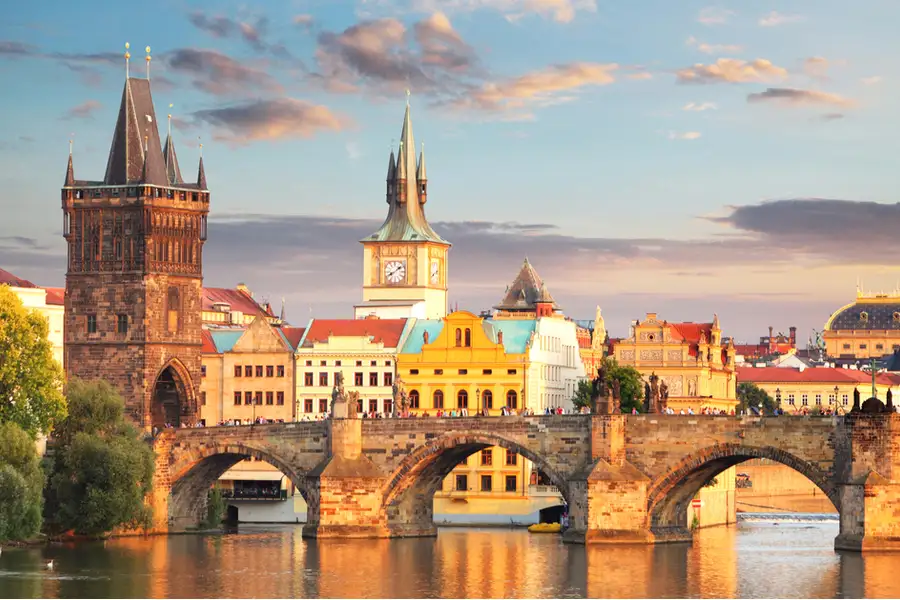
Charles Bridge
 Highlight of Royal Route Guided Tour
Highlight of Royal Route Guided TourCross the river dividing Prague's most historic neighborhoods, and experience one of Europe's most iconic landmarks.
Bridge construction began in 1357 under King Charles IV (hence the name), and it was the only bridge across the Vltava River until 1841. 30 baroque statues of saints line the bridge, and it is filled with street artists and entertainers. Not to be missed.

Maltese Square & Lennon Wall
 Highlight of Royal Route Guided Tour
Highlight of Royal Route Guided TourSee a historic wall that has been covered in John Lennon-inspired graffiti since Communist days.
The wall has been covered in graffiti since the 1960s, and during Communism anti-regime sentiment was common. John Lennon's assassination inspired grafitti reflecting his song, Imagine, which earned the wall its current moniker. It is now a favorite gathering place for tourists, and musicians sometimes congregate there as well. Just around the corner is the Maltese Square, which is one of Prague's more quaint and relaxed public spaces, despite being just off the main tourist route.

Prague Castle
 Highlight of Royal Route Guided Tour
Highlight of Royal Route Guided TourPrague Castle is one of the main attractions in Prague and is also the largest castle complex in the world.
The Prague Castle is the largest castle complex in the world with structures dating back to the 9th century. The St Vitus Cathedral and Basilica of St George can be found within the castle walls. The Prague Castle also includes several gardens, palaces, and a monastery. This castle was the seat of power for the Kings of Bohemia, Holy Roman Emperors, and presidents of former Czechoslovakia. Prague Castle is a UNESCO world heritage site and is one of the most visited places in the country.

Charles Bridge
 Highlight of Royal Route Guided Tour
Highlight of Royal Route Guided TourCross the river dividing Prague's most historic neighborhoods, and experience one of Europe's most iconic landmarks.
Bridge construction began in 1357 under King Charles IV (hence the name), and it was the only bridge across the Vltava River until 1841. 30 baroque statues of saints line the bridge, and it is filled with street artists and entertainers. Not to be missed.

Maltese Square & Lennon Wall
 Highlight of Royal Route Guided Tour
Highlight of Royal Route Guided TourSee a historic wall that has been covered in John Lennon-inspired graffiti since Communist days.
The wall has been covered in graffiti since the 1960s, and during Communism anti-regime sentiment was common. John Lennon's assassination inspired grafitti reflecting his song, Imagine, which earned the wall its current moniker. It is now a favorite gathering place for tourists, and musicians sometimes congregate there as well. Just around the corner is the Maltese Square, which is one of Prague's more quaint and relaxed public spaces, despite being just off the main tourist route.

Prague Castle
 Highlight of Royal Route Guided Tour
Highlight of Royal Route Guided TourPrague Castle is one of the main attractions in Prague and is also the largest castle complex in the world.
The Prague Castle is the largest castle complex in the world with structures dating back to the 9th century. The St Vitus Cathedral and Basilica of St George can be found within the castle walls. The Prague Castle also includes several gardens, palaces, and a monastery. This castle was the seat of power for the Kings of Bohemia, Holy Roman Emperors, and presidents of former Czechoslovakia. Prague Castle is a UNESCO world heritage site and is one of the most visited places in the country.

Charles Bridge
 Highlight of Royal Route Guided Tour
Highlight of Royal Route Guided TourCross the river dividing Prague's most historic neighborhoods, and experience one of Europe's most iconic landmarks.
Bridge construction began in 1357 under King Charles IV (hence the name), and it was the only bridge across the Vltava River until 1841. 30 baroque statues of saints line the bridge, and it is filled with street artists and entertainers. Not to be missed.
prev
next


Day 8
Prague
Day 8
Prague




Morning/Mid-Day
Vyšehrad Fortress
The castle of Vyšehrad was the seat of Bohemia's kings from the 11th to the 12th centuries. Due to its strategic position on a hill overlooking the Vltava River and Prague, it became an important army garrison in the 17th century, and it was transformed into a fortress with huge walls, gates, and ramparts. Walking along these ramparts will offer you wonderful views of the city and river. The interior of the fortress is now given over to a pleasant and quiet park which is a favorite of locals.

Vyšehrad Cemetery
Wander in a graveyard where many prominent Czechs are buried, such as famed composers Dvořák & Smětana.
Show More

Fortress Walls Viewpoint
Enjoy stunning city views from atop the fortress walls.
Show More

Brick Gate and Casemates
Venture within the fortress's massive 17th-century walls and gates.
Show More

Vyšehrad Cemetery
Wander in a graveyard where many prominent Czechs are buried, such as famed composers Dvořák & Smětana.
Show More

Fortress Walls Viewpoint
Enjoy stunning city views from atop the fortress walls.
Show More

Brick Gate and Casemates
Venture within the fortress's massive 17th-century walls and gates.
Show More

Vyšehrad Cemetery
Wander in a graveyard where many prominent Czechs are buried, such as famed composers Dvořák & Smětana.
Show More
prev
next

Day 8
Prague

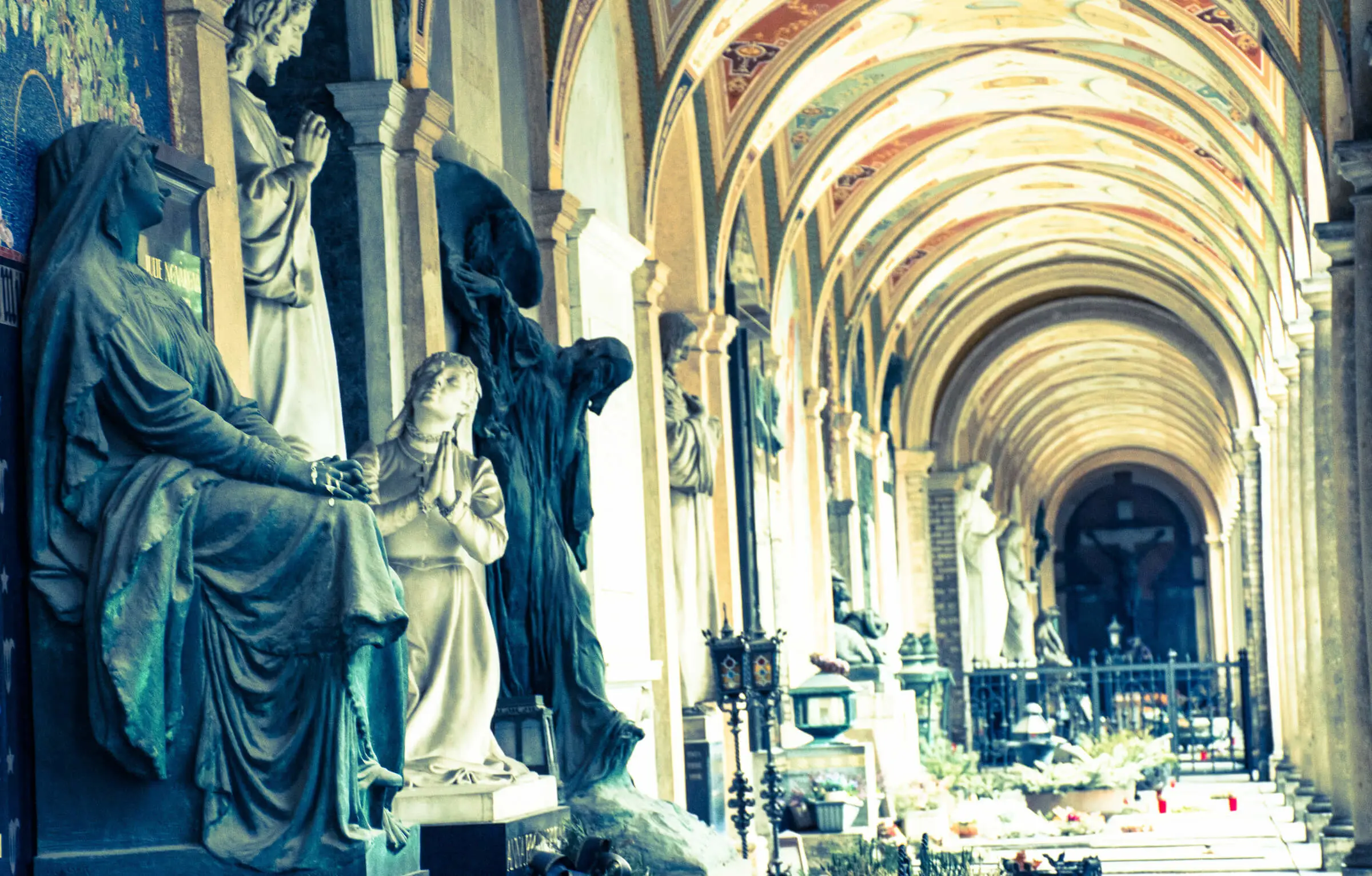
Vyšehrad Cemetery
 Highlight of Vyšehrad Fortress
Highlight of Vyšehrad FortressWander in a graveyard where many prominent Czechs are buried, such as famed composers Dvořák & Smětana.
The cemetery is filled with many tombs which are works of art in themselves, including several arcades with beautiful art-nouveau frescoes. The monumental Slavin tomb is a sort of pantheon of the Czech people, with over 55 prominent persons buried within it. Dvořák and Smětana have their own more modest graves.

Fortress Walls Viewpoint
 Highlight of Vyšehrad Fortress
Highlight of Vyšehrad FortressEnjoy stunning city views from atop the fortress walls.
Prague Castle and most of the city can be seen from above the cavernous Gorlice Hall. A walk along the fortress walls is a delightful experience, as you will enjoy numerous excellent vantage points on all sides of the fortress, enjoying Prague from a different perspective without all the crowds.
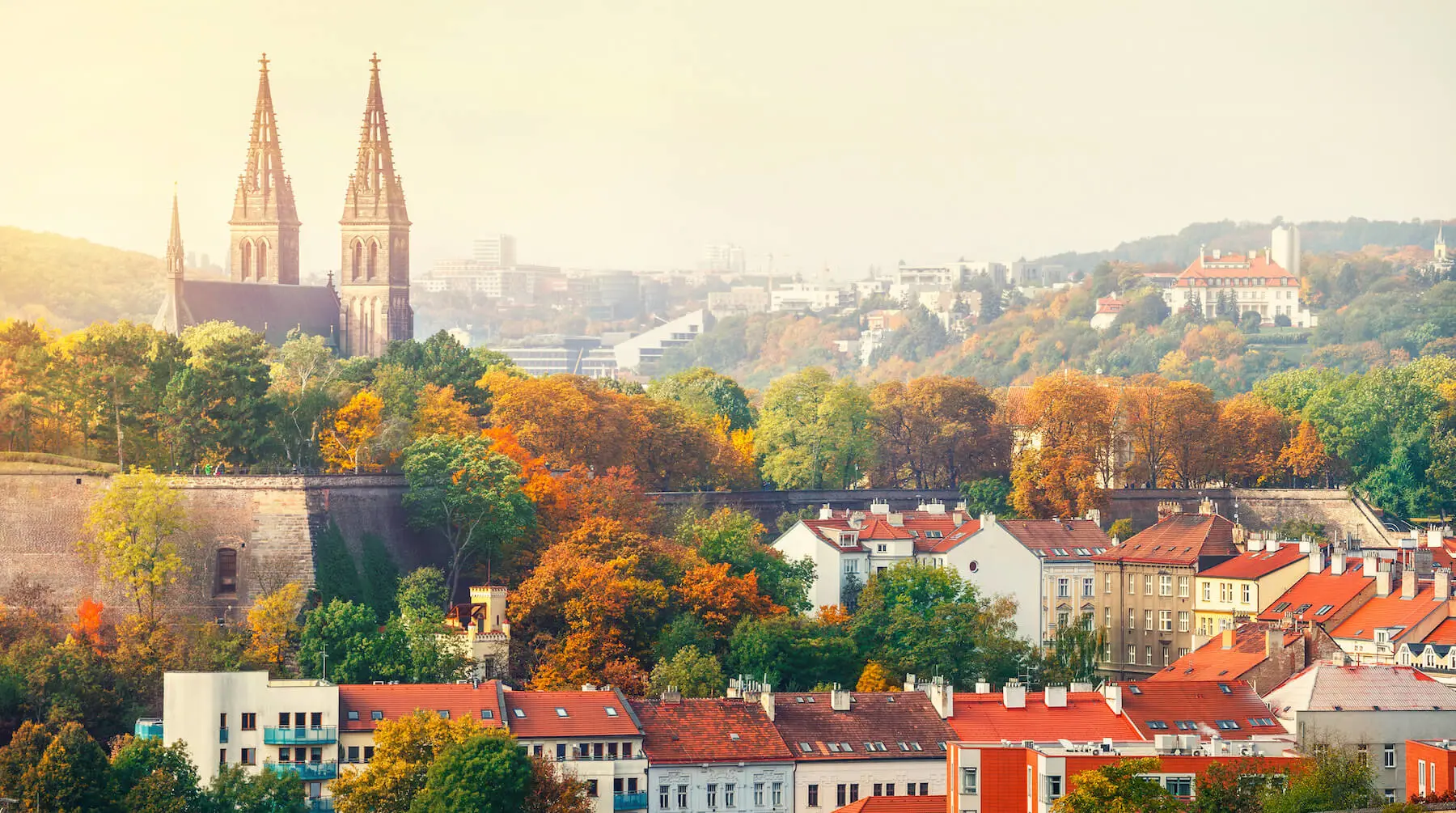
Brick Gate and Casemates
 Highlight of Vyšehrad Fortress
Highlight of Vyšehrad FortressVenture within the fortress's massive 17th-century walls and gates.
A tour through the Brick Gate on the fortress's north side will take you through the narrow underground passageways and casemates of the fortress. You will see a historical exhibit on Vyšehrad as well as the underground Gorlice Hall, where the original statues from the Charles Bridge are stored for safe-keeping (many of the statues on the bridge are copies).

Vyšehrad Cemetery
 Highlight of Vyšehrad Fortress
Highlight of Vyšehrad FortressWander in a graveyard where many prominent Czechs are buried, such as famed composers Dvořák & Smětana.
The cemetery is filled with many tombs which are works of art in themselves, including several arcades with beautiful art-nouveau frescoes. The monumental Slavin tomb is a sort of pantheon of the Czech people, with over 55 prominent persons buried within it. Dvořák and Smětana have their own more modest graves.

Fortress Walls Viewpoint
 Highlight of Vyšehrad Fortress
Highlight of Vyšehrad FortressEnjoy stunning city views from atop the fortress walls.
Prague Castle and most of the city can be seen from above the cavernous Gorlice Hall. A walk along the fortress walls is a delightful experience, as you will enjoy numerous excellent vantage points on all sides of the fortress, enjoying Prague from a different perspective without all the crowds.

Brick Gate and Casemates
 Highlight of Vyšehrad Fortress
Highlight of Vyšehrad FortressVenture within the fortress's massive 17th-century walls and gates.
A tour through the Brick Gate on the fortress's north side will take you through the narrow underground passageways and casemates of the fortress. You will see a historical exhibit on Vyšehrad as well as the underground Gorlice Hall, where the original statues from the Charles Bridge are stored for safe-keeping (many of the statues on the bridge are copies).

Vyšehrad Cemetery
 Highlight of Vyšehrad Fortress
Highlight of Vyšehrad FortressWander in a graveyard where many prominent Czechs are buried, such as famed composers Dvořák & Smětana.
The cemetery is filled with many tombs which are works of art in themselves, including several arcades with beautiful art-nouveau frescoes. The monumental Slavin tomb is a sort of pantheon of the Czech people, with over 55 prominent persons buried within it. Dvořák and Smětana have their own more modest graves.
prev
next

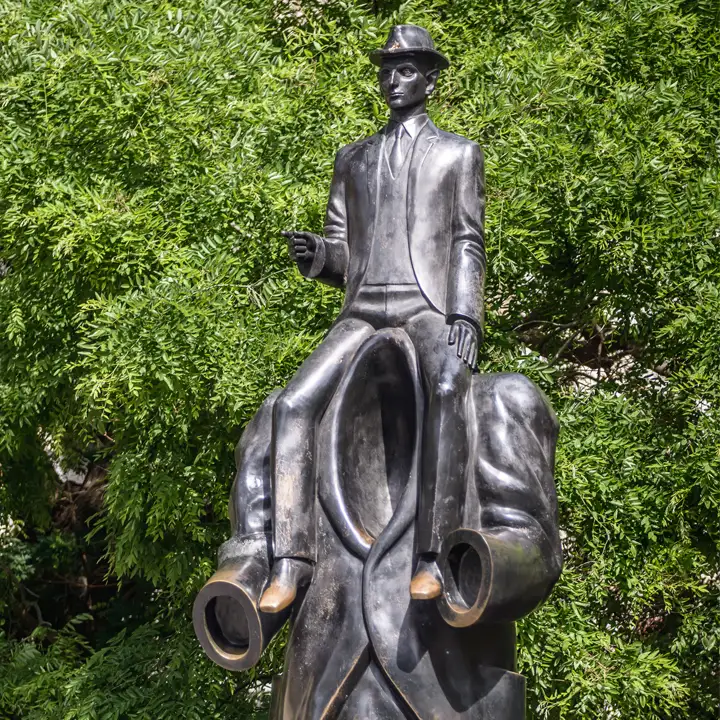
Day 9
Prague
Day 9
Prague






Morning/Mid-Day
Jewish Quarter
Jews have lived in Prague since its beginnings in the 10th century and have endowed it with a rich heritage. The ghetto was created in the 12th century, as Jews were forced to live separately from Christians. Despite persecution, the community prospered, but sadly, only a small minority survived the Nazi occupation. A lasting legacy remains, including synagogues, architecture, and a fascinating cemetery.

Spanish Synagogue
Discover the synagogue considered by many to be Prague's most beautiful.
Show More

Old-New Synagogue
See the oldest surviving synagogue in Europe and also one of Prague's earliest Gothic buildings.
Show More

Old Jewish Cemetery
Take an unforgettable visit to one of Europe's largest medieval Jewish cemeteries.
Show More

Spanish Synagogue
Discover the synagogue considered by many to be Prague's most beautiful.
Show More

Old-New Synagogue
See the oldest surviving synagogue in Europe and also one of Prague's earliest Gothic buildings.
Show More

Old Jewish Cemetery
Take an unforgettable visit to one of Europe's largest medieval Jewish cemeteries.
Show More

Spanish Synagogue
Discover the synagogue considered by many to be Prague's most beautiful.
Show More
prev
next

Day 9
Prague


Spanish Synagogue
 Highlight of Jewish Quarter
Highlight of Jewish QuarterDiscover the synagogue considered by many to be Prague's most beautiful.
Completed in 1868, the Spanish Synagogue is the newest synagogue in Prague's Jewish Quarter, but happens to be built on the site of the former Oldest Synagogue in Prague. It is built in a stunning Spanish Moorish style as a symbol of the flowering of the Jewish culture which occurred under Muslim rule on the Iberian Peninsula.

Old-New Synagogue
 Highlight of Jewish Quarter
Highlight of Jewish QuarterSee the oldest surviving synagogue in Europe and also one of Prague's earliest Gothic buildings.
When built it was Prague’s newest synagogue, but over time became its oldest – hence the “Old-New”. A beautiful ark holds the Torah and legend says its attic is the hiding place of the legendary clay Golem.

Old Jewish Cemetery
 Highlight of Jewish Quarter
Highlight of Jewish QuarterTake an unforgettable visit to one of Europe's largest medieval Jewish cemeteries.
As the Jewish Ghetto was quite cramped, there was no room to expand the cemetery. Unable to acquire further land, and not wishing to dishonor ancestors through the demolition of existing graves, Prague's Jews buried their loved ones in multiple levels. Gravestones are packed in tightly and in some areas the burials reach 12 layers!

Spanish Synagogue
 Highlight of Jewish Quarter
Highlight of Jewish QuarterDiscover the synagogue considered by many to be Prague's most beautiful.
Completed in 1868, the Spanish Synagogue is the newest synagogue in Prague's Jewish Quarter, but happens to be built on the site of the former Oldest Synagogue in Prague. It is built in a stunning Spanish Moorish style as a symbol of the flowering of the Jewish culture which occurred under Muslim rule on the Iberian Peninsula.

Old-New Synagogue
 Highlight of Jewish Quarter
Highlight of Jewish QuarterSee the oldest surviving synagogue in Europe and also one of Prague's earliest Gothic buildings.
When built it was Prague’s newest synagogue, but over time became its oldest – hence the “Old-New”. A beautiful ark holds the Torah and legend says its attic is the hiding place of the legendary clay Golem.

Old Jewish Cemetery
 Highlight of Jewish Quarter
Highlight of Jewish QuarterTake an unforgettable visit to one of Europe's largest medieval Jewish cemeteries.
As the Jewish Ghetto was quite cramped, there was no room to expand the cemetery. Unable to acquire further land, and not wishing to dishonor ancestors through the demolition of existing graves, Prague's Jews buried their loved ones in multiple levels. Gravestones are packed in tightly and in some areas the burials reach 12 layers!

Spanish Synagogue
 Highlight of Jewish Quarter
Highlight of Jewish QuarterDiscover the synagogue considered by many to be Prague's most beautiful.
Completed in 1868, the Spanish Synagogue is the newest synagogue in Prague's Jewish Quarter, but happens to be built on the site of the former Oldest Synagogue in Prague. It is built in a stunning Spanish Moorish style as a symbol of the flowering of the Jewish culture which occurred under Muslim rule on the Iberian Peninsula.
prev
next


Day 10
Krakow
Day 10
Krakow




6:10 AM
Hotel Transfer from Krakow Rail Station
Upon your arrival in Krakow, your driver will meet you on the platform. He will be carrying a sign with your name on it. The driver will drop you off at your hotel. This is a private transfer. The price of the pickup is already included in your itinerary cost so you will not have to pay the driver. IMPORTANT NOTE: Please be aware the car service can fit up to 1 checked item of luggage and 1 personal item per person, such as a purse or small backpack. If you think you will have more baggage, please inform your travel consultant as this may result in an additional fee.

Day 10
Krakow


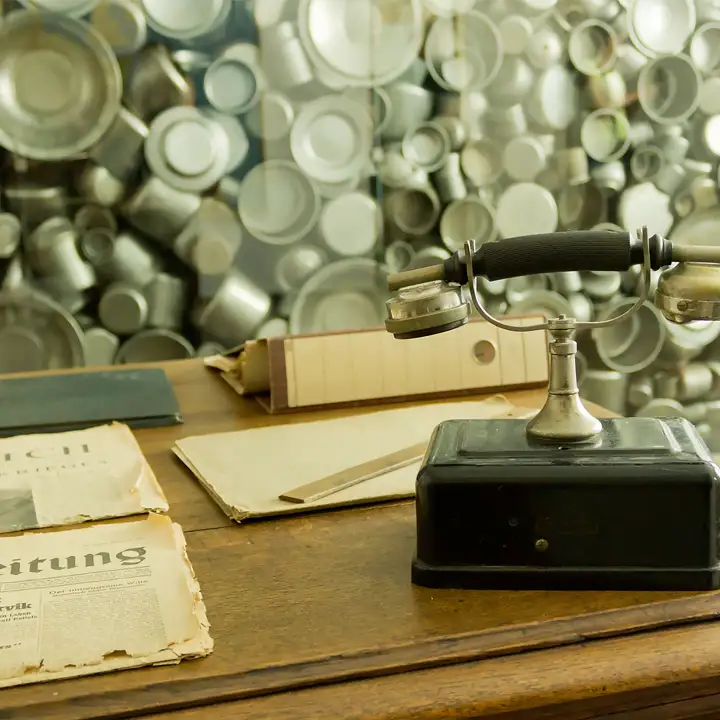
Day 11
Krakow
Day 11
Krakow



Morning/Mid-Day
Schindler's Factory Museum
During World War II Oscar Schindler saved the lives of more than 1,100 Jews by employing them in his enamelware factory in Krakow. Until recently still used as a factory, the building now houses one of Europe's most impressive new museums. It tells not only the story of Schindler and the Jews he protected, but of the wider experience of Krakow during World War II.

Podgórze
Wander the streets of the former Jewish Ghetto.
Show More

Podgórze
Wander the streets of the former Jewish Ghetto.
Show More

Podgórze
Wander the streets of the former Jewish Ghetto.
Show More

Podgórze
Wander the streets of the former Jewish Ghetto.
Show More

Podgórze
Wander the streets of the former Jewish Ghetto.
Show More
prev
next

Day 11
Krakow


Podgórze
 Highlight of Schindler's Factory Museum
Highlight of Schindler's Factory MuseumWander the streets of the former Jewish Ghetto.
Podgórze is the neighborhood where the Krakow Jewish Ghetto was located. At the beginning of the war, only about 3,000 people lived in the district, but over 15,000 Jews were forcibly moved there and surrounded by tall walls and guarded gates. In 1942-3 the ghetto was "liquidated", with residents sent to either labor camps or extermination camps, or simply murdered in the streets. A couple small sections of the wall and a memorial of empty chairs (each chair representing a 1,000 victims) on the ghetto square are among the very few remaining physical reminders of the ghetto. On the corner of the square, you can also visit the small museum of the Apteka pod Orlem (Pharmacy under the Eagle), which was the only pharmacy allowed to operate in the ghetto. The Polish Catholic owner requested permission to operate within the ghetto and provided medical supplies to residents, often for free. Both he and Oscar Schindler were honored by Israel as "Righteous Among the Nations".

Podgórze
 Highlight of Schindler's Factory Museum
Highlight of Schindler's Factory MuseumWander the streets of the former Jewish Ghetto.
Podgórze is the neighborhood where the Krakow Jewish Ghetto was located. At the beginning of the war, only about 3,000 people lived in the district, but over 15,000 Jews were forcibly moved there and surrounded by tall walls and guarded gates. In 1942-3 the ghetto was "liquidated", with residents sent to either labor camps or extermination camps, or simply murdered in the streets. A couple small sections of the wall and a memorial of empty chairs (each chair representing a 1,000 victims) on the ghetto square are among the very few remaining physical reminders of the ghetto. On the corner of the square, you can also visit the small museum of the Apteka pod Orlem (Pharmacy under the Eagle), which was the only pharmacy allowed to operate in the ghetto. The Polish Catholic owner requested permission to operate within the ghetto and provided medical supplies to residents, often for free. Both he and Oscar Schindler were honored by Israel as "Righteous Among the Nations".

Podgórze
 Highlight of Schindler's Factory Museum
Highlight of Schindler's Factory MuseumWander the streets of the former Jewish Ghetto.
Podgórze is the neighborhood where the Krakow Jewish Ghetto was located. At the beginning of the war, only about 3,000 people lived in the district, but over 15,000 Jews were forcibly moved there and surrounded by tall walls and guarded gates. In 1942-3 the ghetto was "liquidated", with residents sent to either labor camps or extermination camps, or simply murdered in the streets. A couple small sections of the wall and a memorial of empty chairs (each chair representing a 1,000 victims) on the ghetto square are among the very few remaining physical reminders of the ghetto. On the corner of the square, you can also visit the small museum of the Apteka pod Orlem (Pharmacy under the Eagle), which was the only pharmacy allowed to operate in the ghetto. The Polish Catholic owner requested permission to operate within the ghetto and provided medical supplies to residents, often for free. Both he and Oscar Schindler were honored by Israel as "Righteous Among the Nations".

Podgórze
 Highlight of Schindler's Factory Museum
Highlight of Schindler's Factory MuseumWander the streets of the former Jewish Ghetto.
Podgórze is the neighborhood where the Krakow Jewish Ghetto was located. At the beginning of the war, only about 3,000 people lived in the district, but over 15,000 Jews were forcibly moved there and surrounded by tall walls and guarded gates. In 1942-3 the ghetto was "liquidated", with residents sent to either labor camps or extermination camps, or simply murdered in the streets. A couple small sections of the wall and a memorial of empty chairs (each chair representing a 1,000 victims) on the ghetto square are among the very few remaining physical reminders of the ghetto. On the corner of the square, you can also visit the small museum of the Apteka pod Orlem (Pharmacy under the Eagle), which was the only pharmacy allowed to operate in the ghetto. The Polish Catholic owner requested permission to operate within the ghetto and provided medical supplies to residents, often for free. Both he and Oscar Schindler were honored by Israel as "Righteous Among the Nations".

Podgórze
 Highlight of Schindler's Factory Museum
Highlight of Schindler's Factory MuseumWander the streets of the former Jewish Ghetto.
Podgórze is the neighborhood where the Krakow Jewish Ghetto was located. At the beginning of the war, only about 3,000 people lived in the district, but over 15,000 Jews were forcibly moved there and surrounded by tall walls and guarded gates. In 1942-3 the ghetto was "liquidated", with residents sent to either labor camps or extermination camps, or simply murdered in the streets. A couple small sections of the wall and a memorial of empty chairs (each chair representing a 1,000 victims) on the ghetto square are among the very few remaining physical reminders of the ghetto. On the corner of the square, you can also visit the small museum of the Apteka pod Orlem (Pharmacy under the Eagle), which was the only pharmacy allowed to operate in the ghetto. The Polish Catholic owner requested permission to operate within the ghetto and provided medical supplies to residents, often for free. Both he and Oscar Schindler were honored by Israel as "Righteous Among the Nations".
prev
next


Day 12
Depart Krakow
Day 12
Depart Krakow

To Be Determined
Transfer to Airport
Krakow has one main airport, Kraków John Paul II International Airport, where almost all visitors depart. The most affordable and fast way to reach the airport is by train. The regional train takes less than 20 minutes and leaves directly from the main station in central Krakow. Your hotel can also arrange a reliable taxi or if you have the app, Uber is also a good option. You can also arrange a private transfer. If you are picked up about two hours and 45 minutes before your departure time, you should arrive at the airport with over 2 hours to spare, depending on traffic. If you are leaving during rush hour, you may want to budget an extra fifteen to thirty minutes.

Day 12
Depart Krakow


What's Included In Empires of Central Europe Trip

Pre-Paid Tours and Activities:
- Best of Budapest: Half-Day Walking Tour of Highlights & Hidden Finds
- Guided Walk through Vienna's Inner City
- Prague Castle & Royal Route Guided Walk
- Walking Tour of Krakow's Historic Center
- City Card for Krakow, including discounts to many popular attractions

Pre-Paid Transportation:
- 2nd Class Train Tickets from Budapest to Vienna
- 2nd Class Train Tickets from Vienna to Prague
- Train Tickets from Prague to Krakow
- Public Transport Tickets for Krakow and Vienna
- Private Transfer from the Budapest Airport
- Private Transfer from Krakow Rail Station to Your Hotel

Accommodation:
- 2 nights at a hotel of your choice in Budapest
- 3 nights at a hotel of your choice in Vienna
- 3 nights at a hotel of your choice in Prague
- 2 nights at a hotel of your choice in Krakow

Go Real Travel Mobile App:
- Itinerary Plan & Reservations Info
- Points of Interest
- Detailed Travel Information
- Maps & Directions
Other Trips You May Like

8 Days
From$1425USD
Enchanting Central Europe: 8-Days in Prague, Vienna & Budapest

Czech Republic, Austria, Hungary

12 Days
From$2675USD
Jewish Heritage and Scenic Rivers: A Journey through Prague, Vienna, and Budapest

Hungary, Austria, Czech Republic

12 Days
From$2200USD
A 12-Day Prague, Vienna, Budapest, and Bratislava Itinerary

Czech Republic, Austria, Slovakia, Hungary

10 Days
From$2249USD
Perfect Whirlwind Itinerary to Prague, Salzburg, Vienna & Budapest

Czech Republic, Austria, Hungary

15 Days
From$2575USD
Highlights of Budapest, Vienna, Prague, Krakow & Warsaw in 15 days

Hungary, Austria, Czech Republic, Poland

14 Days
From$2875USD
2-Week Journey Through Central & Eastern Europe: History

Germany, Czech Republic, Austria, Hungary, Poland

14 Days
From$2350USD
Imperial Elegance: Prague, Vienna and Budapest Itinerary 14 Days

Czech Republic, Austria, Hungary

7 Days
From$1695USD

15 Days
From$2750USD
Prague, Vienna, and Budapest, 15 Days of Must See Sights & Local Scenes

Czech Republic, Austria, Hungary

8 Days
From$1425USD
Enchanting Central Europe: 8-Days in Prague, Vienna & Budapest

Czech Republic, Austria, Hungary

12 Days
From$2675USD
Jewish Heritage and Scenic Rivers: A Journey through Prague, Vienna, and Budapest

Hungary, Austria, Czech Republic

12 Days
From$2200USD
A 12-Day Prague, Vienna, Budapest, and Bratislava Itinerary

Czech Republic, Austria, Slovakia, Hungary

10 Days
From$2249USD
Perfect Whirlwind Itinerary to Prague, Salzburg, Vienna & Budapest

Czech Republic, Austria, Hungary

15 Days
From$2575USD
Highlights of Budapest, Vienna, Prague, Krakow & Warsaw in 15 days

Hungary, Austria, Czech Republic, Poland

14 Days
From$2875USD
2-Week Journey Through Central & Eastern Europe: History

Germany, Czech Republic, Austria, Hungary, Poland

14 Days
From$2350USD
Imperial Elegance: Prague, Vienna and Budapest Itinerary 14 Days

Czech Republic, Austria, Hungary

7 Days
From$1695USD

15 Days
From$2750USD
Prague, Vienna, and Budapest, 15 Days of Must See Sights & Local Scenes

Czech Republic, Austria, Hungary
prev
next
Featured Blogs
prev
next
Our Customers Say It Best
Marianne Strydom, Paarl, South Africa
I just wanted to thank you for organizing an amazing trip for me – I packed in so much in such a short period of time and everything was just perfect. The way you do things makes it possible to really get to know the destination, which for me as a travel agent could not have been better. 

Otto Chuy, Los Angeles, California
I am still surprised how everything worked as planned, without a hitch. All instructions in your itinerary were precise and correct. Your suggestions and comments in each of the locations we went to were very helpful. All your guides, without exception, were wonderful and exactly on time. 

Malini Dutta, Boston, Massachusetts
We can't thank you enough for the detailed plans, maps, and suggestions. It really felt that someone was holding our hands and showing us around. We had all the excitement of discovering foreign lands, with none of the problems that can happen while negotiating unfamiliar places. In fact, all the cities felt like home within a few hours of arriving and exploring. 

Bev and Mark Frankel, Williamsburg, Virginia
We could not be more pleased with Go Real Travel! You took the guess work out of things like public transport but still managed to allow us the freedom to tour as we wanted. Our guides were exceptional and every time I saw a Viking Cruise tour of 25 people, I realized the quality experience we were getting with Go Real. 

Marianne Strydom, Paarl, South Africa
I just wanted to thank you for organizing an amazing trip for me – I packed in so much in such a short period of time and everything was just perfect. The way you do things makes it possible to really get to know the destination, which for me as a travel agent could not have been better. 

Otto Chuy, Los Angeles, California
I am still surprised how everything worked as planned, without a hitch. All instructions in your itinerary were precise and correct. Your suggestions and comments in each of the locations we went to were very helpful. All your guides, without exception, were wonderful and exactly on time. 

Malini Dutta, Boston, Massachusetts
We can't thank you enough for the detailed plans, maps, and suggestions. It really felt that someone was holding our hands and showing us around. We had all the excitement of discovering foreign lands, with none of the problems that can happen while negotiating unfamiliar places. In fact, all the cities felt like home within a few hours of arriving and exploring. 

Bev and Mark Frankel, Williamsburg, Virginia
We could not be more pleased with Go Real Travel! You took the guess work out of things like public transport but still managed to allow us the freedom to tour as we wanted. Our guides were exceptional and every time I saw a Viking Cruise tour of 25 people, I realized the quality experience we were getting with Go Real. 



Explore cities in more detail
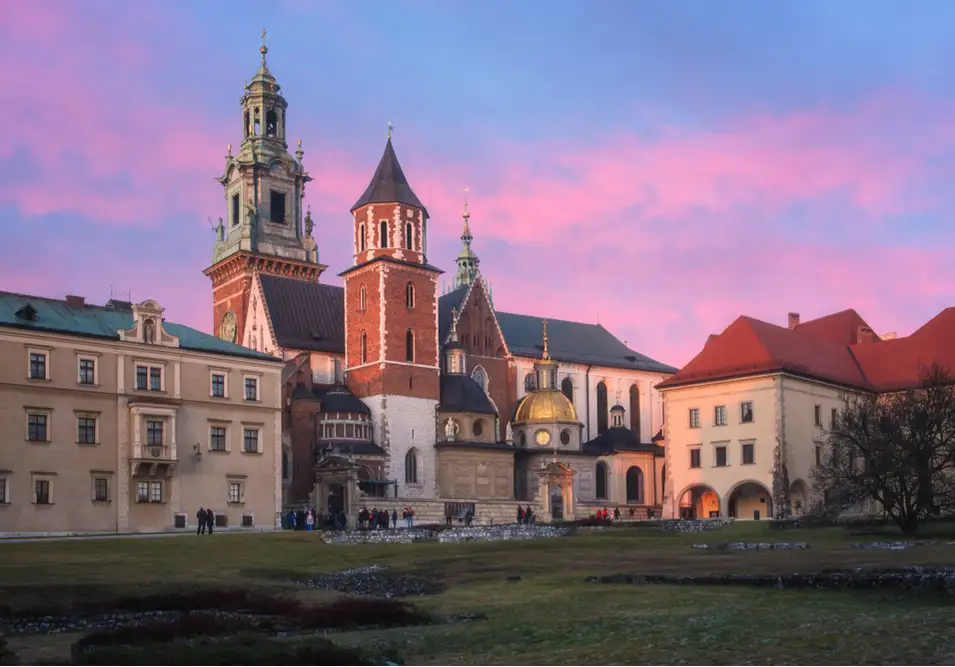
Krakow
Krakow is a city in the south of Poland and the country’s former royal capital. Thought to have been inhabited for tens of thousands of years, the history here seems to sit comfortably alongside the vibrant, young city that is Krakow today. The main market square at Krakow’s center is overlooked by St Mary’s Basilica, a perfect example of Polish Gothic architecture and a UNESCO World Heritage Site. The square itself is usually filled with life, as the pubs and restaurants around the edges spill out onto the sidewalks. Winter is cold here, but that’s just a perfect excuse to slip inside a cozy, well-heated pub and sip hot mulled wine over a hearty Polish dinner. With all of Krakow’s heady charm, it can be easy to forget the all-too-recent atrocities that occurred in this region. A short trip to the Auschwitz-Birkenau concentration camp nearby, where the Nazis committed their genocide, provides a sober but important reminder of that past. A hard past exists alongside a happy and electric present in Krakow, a city that has endured centuries of trials and emerged looking better than ever.

Learn About Krakow
Build Krakow Trip
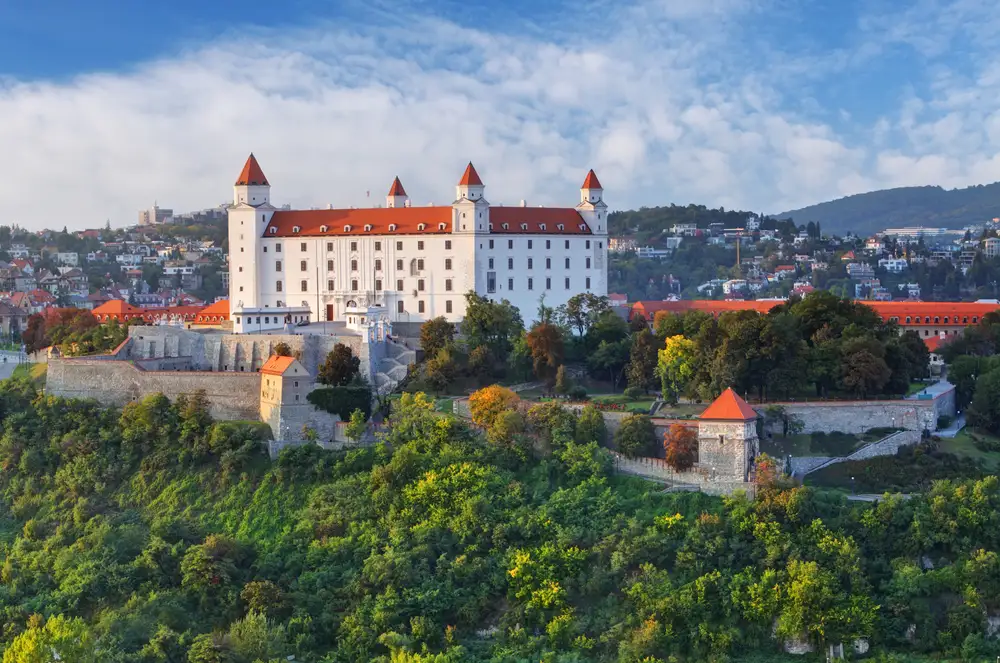
Bratislava
Bratislava is one of the most up-and-coming cities in central Europe. After years in the shadows of the Soviet bloc, and often drowned out by Prague, Bratislava has finally broken out. The Bratislavan region is now one of the richest per capita in the EU. This economic upswing has infused Bratislava with a newfound zeal. Trendy cafes and cool shopping centers are popping up everywhere, and the city’s already happening nightlife scene is only set to get better. Still less crowded than its central European neighbors Prague, Vienna, and Budapest, but just as intriguing, there’s really never been a better time for a visit to Bratislava. Ruled over by the Hungarians, Austrians, and most recently the Soviets, Bratislava is a city of strange contrasts. As soon as you arrive in Bratislava, you’ll see the pastel-hued churches, baroque houses, and the cobbled Old Town Square brush shoulders with modern brutalist buildings, retrofuturistic towers, and the clunky communist built UFO bridge. The city’s oldest building, its castle, is set atop the western edge of the Little Carpathian Hills like a trophy, the city’s hard-won main icon. For the first time in nearly a millennium, Bratislava has now seized control of its own destiny, and it shows.

Learn About Bratislava
Build Bratislava Trip

Belgrade
Belgrade is one of Europe’s oldest cities and with age comes experience. Remnants of the city’s turbulent past can be seen easily during a stroll through the streets: socialist blocks sit beside art nouveau buildings, while fragments of the Habsburg monarchy contrast with Ottoman Turk relics. If you’re looking to take in a little history, you’ll have a lot to choose from between the city’s many museums, monuments, and of course, the fortress. What Belgrade lacks in traditional beauty it makes up for in personality. Belgrade is first and foremost known for its unrivaled nightlife scene. Appropriately named the city that never sleeps, after the sun goes down you can explore floating clubs on the river, hip bars around the center, and great parties everywhere you look. During the daylight hours, you’ll find busy locals bustling around the business centers, relaxing in elegant coffee houses, or wandering through the city’s many beautiful parks.

Learn About Belgrade
Build Belgrade Trip
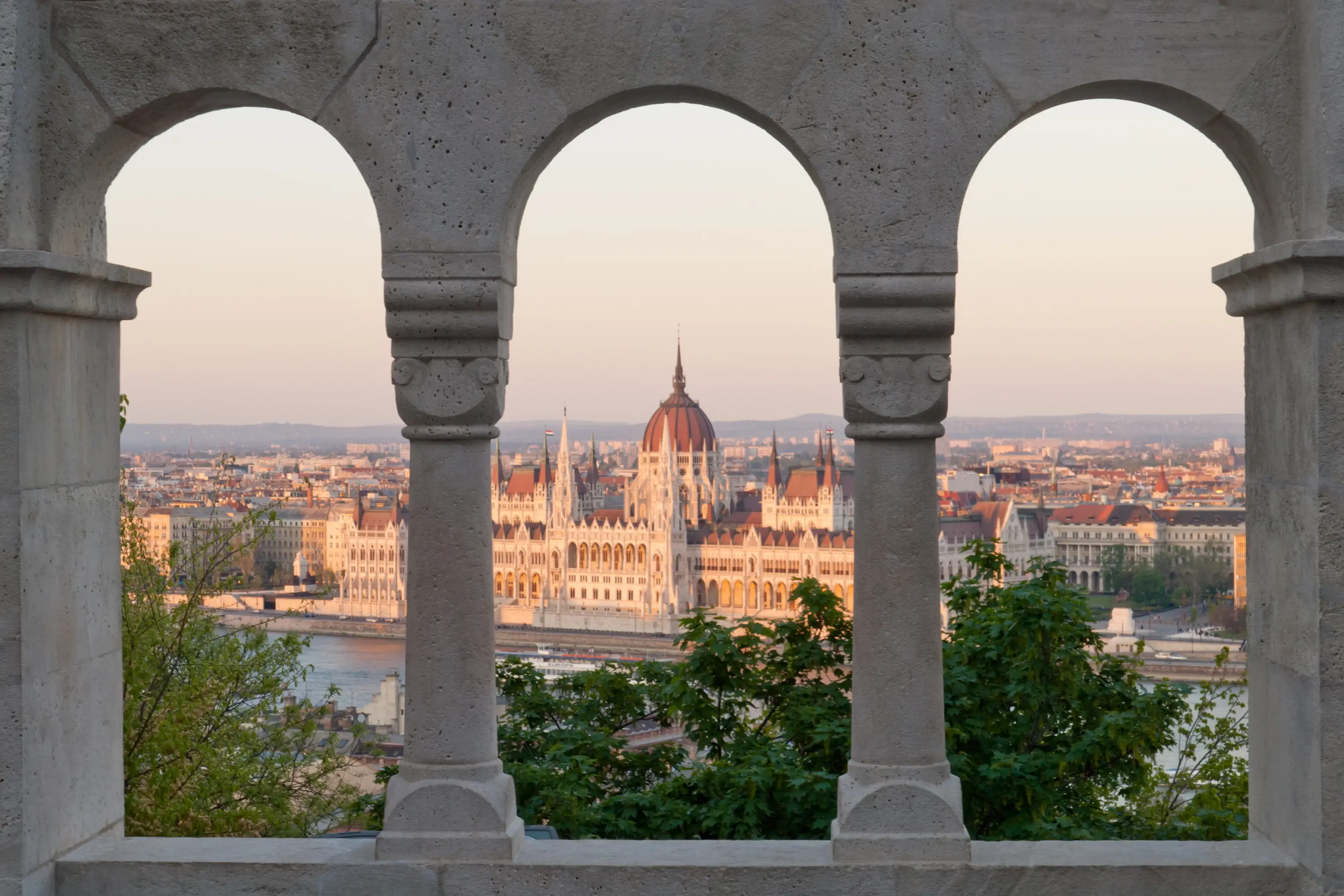
Budapest
Situated at the heart of Europe, Budapest is the capital of Hungary, appropriately named 'The Pearl of the Danube,' for its fixating and almost haunting beauty. Formerly two separate cities, Buda and Pest were forged into one by time, occupation, and the eight bridges that anchor them together today. From the Romans to the Communists, each occupier left its flavor profile in Budapest, evident in the famous spicy Hungarian stew known as 'goulash.' Budapest is a melting pot of history, culture, and taste, from the magnificent Baroque and neo-Gothic architecture to the Turkish thermal baths. After a long day of sightseeing, treat yourself to a glass of Tokaj, what King Louis XIV of France referred to as the "Wine of Kings, King of Wines". Budapest has a flavor to satisfy any taste.

Learn About Budapest
Build Budapest Trip
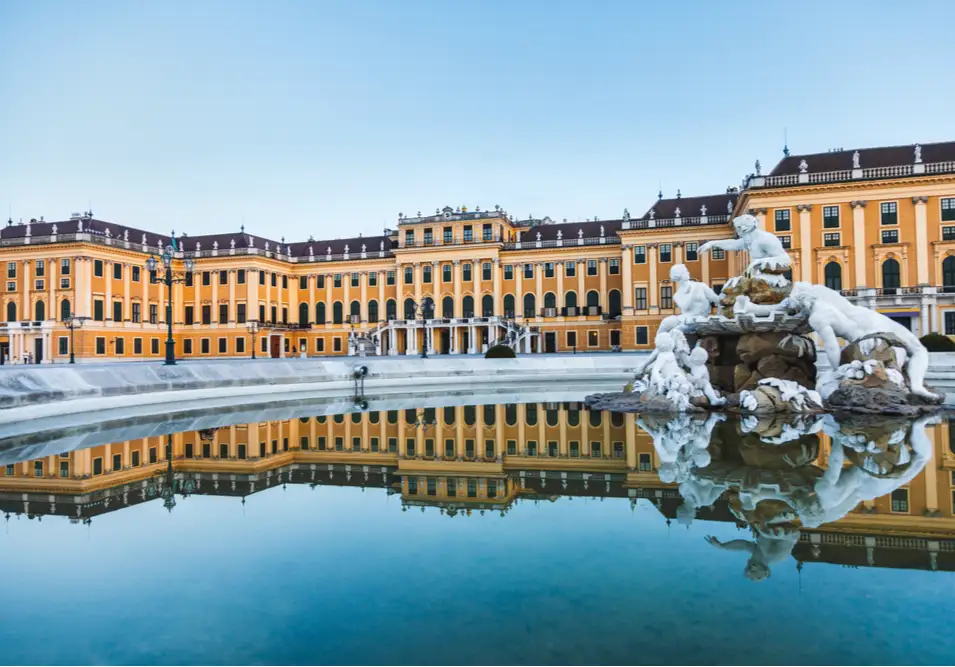
Vienna
Artistic and musical, historical and elegant, Vienna is the definition of class. The seat of the Habsburg monarchy for over six centuries, it's no wonder this city is still fit for royalty. Baroque buildings and imperial palaces dominate the cityscape, while locals stride gracefully through the streets, likely on their way to a classical music concert or art exhibition. Visitors from all over the world flock to Schonbrunn Palace, historical museums, and local eateries for authentic Viennese schnitzel. Vienna is also home to world-class wining and dining. Famous dishes include Wiener schnitzel, Tafelspitz (prime boiled beef), and apfelstrudel (apple strudel), all of which pair well with a glass of fine Austrian wine. No matter how long you spend in Vienna, you'll leave with a new appreciation for the finer things in life.

Learn About Vienna
Build Vienna Trip
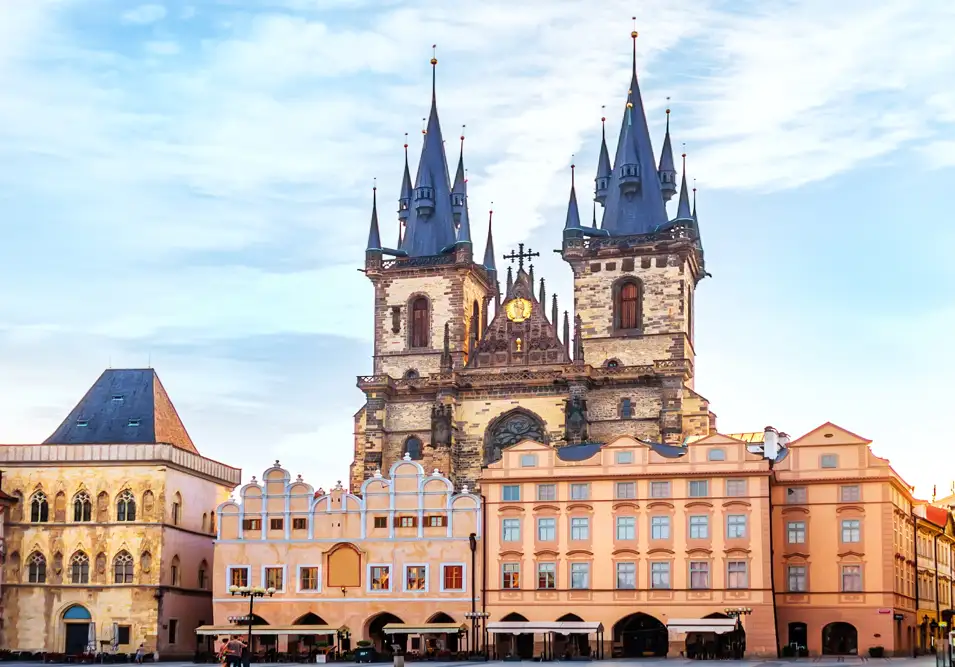
Prague
The city of Prague is indisputably the gem of Central Europe. Full of history, culture, and classic Czech pubs around every corner, Prague is teeming with nooks and crannies just waiting to be discovered. The narrow cobblestone streets and warm red rooftops give the city a homey feel, while the well-preserved medieval architecture transports you back in time. Walking across the Charles Bridge with the view of the Prague Castle will make you feel like you’re living in a fairytale, and you might as well be. As an up-and-coming destination, Prague is a perfect mix of classic and modern. New trendy cafes and bistros are always popping up, and you can always find a group of lively locals chowing down on goulash and quaffing pivo (the best beer in Europe!) at traditional Czech restaurants across the city. The clash of modernity and tradition, preservation and innovation, gives this city a mysterious air that you won’t soon forget.

Learn About Prague
Build Prague Trip

Krakow
Krakow is a city in the south of Poland and the country’s former royal capital. Thought to have been inhabited for tens of thousands of years, the history here seems to sit comfortably alongside the vibrant, young city that is Krakow today. The main market square at Krakow’s center is overlooked by St Mary’s Basilica, a perfect example of Polish Gothic architecture and a UNESCO World Heritage Site. The square itself is usually filled with life, as the pubs and restaurants around the edges spill out onto the sidewalks. Winter is cold here, but that’s just a perfect excuse to slip inside a cozy, well-heated pub and sip hot mulled wine over a hearty Polish dinner. With all of Krakow’s heady charm, it can be easy to forget the all-too-recent atrocities that occurred in this region. A short trip to the Auschwitz-Birkenau concentration camp nearby, where the Nazis committed their genocide, provides a sober but important reminder of that past. A hard past exists alongside a happy and electric present in Krakow, a city that has endured centuries of trials and emerged looking better than ever.

Learn About Krakow
Build Krakow Trip

Bratislava
Bratislava is one of the most up-and-coming cities in central Europe. After years in the shadows of the Soviet bloc, and often drowned out by Prague, Bratislava has finally broken out. The Bratislavan region is now one of the richest per capita in the EU. This economic upswing has infused Bratislava with a newfound zeal. Trendy cafes and cool shopping centers are popping up everywhere, and the city’s already happening nightlife scene is only set to get better. Still less crowded than its central European neighbors Prague, Vienna, and Budapest, but just as intriguing, there’s really never been a better time for a visit to Bratislava. Ruled over by the Hungarians, Austrians, and most recently the Soviets, Bratislava is a city of strange contrasts. As soon as you arrive in Bratislava, you’ll see the pastel-hued churches, baroque houses, and the cobbled Old Town Square brush shoulders with modern brutalist buildings, retrofuturistic towers, and the clunky communist built UFO bridge. The city’s oldest building, its castle, is set atop the western edge of the Little Carpathian Hills like a trophy, the city’s hard-won main icon. For the first time in nearly a millennium, Bratislava has now seized control of its own destiny, and it shows.

Learn About Bratislava
Build Bratislava Trip

Belgrade
Belgrade is one of Europe’s oldest cities and with age comes experience. Remnants of the city’s turbulent past can be seen easily during a stroll through the streets: socialist blocks sit beside art nouveau buildings, while fragments of the Habsburg monarchy contrast with Ottoman Turk relics. If you’re looking to take in a little history, you’ll have a lot to choose from between the city’s many museums, monuments, and of course, the fortress. What Belgrade lacks in traditional beauty it makes up for in personality. Belgrade is first and foremost known for its unrivaled nightlife scene. Appropriately named the city that never sleeps, after the sun goes down you can explore floating clubs on the river, hip bars around the center, and great parties everywhere you look. During the daylight hours, you’ll find busy locals bustling around the business centers, relaxing in elegant coffee houses, or wandering through the city’s many beautiful parks.

Learn About Belgrade
Build Belgrade Trip

Budapest
Situated at the heart of Europe, Budapest is the capital of Hungary, appropriately named 'The Pearl of the Danube,' for its fixating and almost haunting beauty. Formerly two separate cities, Buda and Pest were forged into one by time, occupation, and the eight bridges that anchor them together today. From the Romans to the Communists, each occupier left its flavor profile in Budapest, evident in the famous spicy Hungarian stew known as 'goulash.' Budapest is a melting pot of history, culture, and taste, from the magnificent Baroque and neo-Gothic architecture to the Turkish thermal baths. After a long day of sightseeing, treat yourself to a glass of Tokaj, what King Louis XIV of France referred to as the "Wine of Kings, King of Wines". Budapest has a flavor to satisfy any taste.

Learn About Budapest
Build Budapest Trip

Vienna
Artistic and musical, historical and elegant, Vienna is the definition of class. The seat of the Habsburg monarchy for over six centuries, it's no wonder this city is still fit for royalty. Baroque buildings and imperial palaces dominate the cityscape, while locals stride gracefully through the streets, likely on their way to a classical music concert or art exhibition. Visitors from all over the world flock to Schonbrunn Palace, historical museums, and local eateries for authentic Viennese schnitzel. Vienna is also home to world-class wining and dining. Famous dishes include Wiener schnitzel, Tafelspitz (prime boiled beef), and apfelstrudel (apple strudel), all of which pair well with a glass of fine Austrian wine. No matter how long you spend in Vienna, you'll leave with a new appreciation for the finer things in life.

Learn About Vienna
Build Vienna Trip

Prague
The city of Prague is indisputably the gem of Central Europe. Full of history, culture, and classic Czech pubs around every corner, Prague is teeming with nooks and crannies just waiting to be discovered. The narrow cobblestone streets and warm red rooftops give the city a homey feel, while the well-preserved medieval architecture transports you back in time. Walking across the Charles Bridge with the view of the Prague Castle will make you feel like you’re living in a fairytale, and you might as well be. As an up-and-coming destination, Prague is a perfect mix of classic and modern. New trendy cafes and bistros are always popping up, and you can always find a group of lively locals chowing down on goulash and quaffing pivo (the best beer in Europe!) at traditional Czech restaurants across the city. The clash of modernity and tradition, preservation and innovation, gives this city a mysterious air that you won’t soon forget.

Learn About Prague
Build Prague Trip
prev
next


 Map of Your Itinerary Route
Map of Your Itinerary Route
Zoom In to the cities to see your itinerary in more detail


 4.8
4.8 






